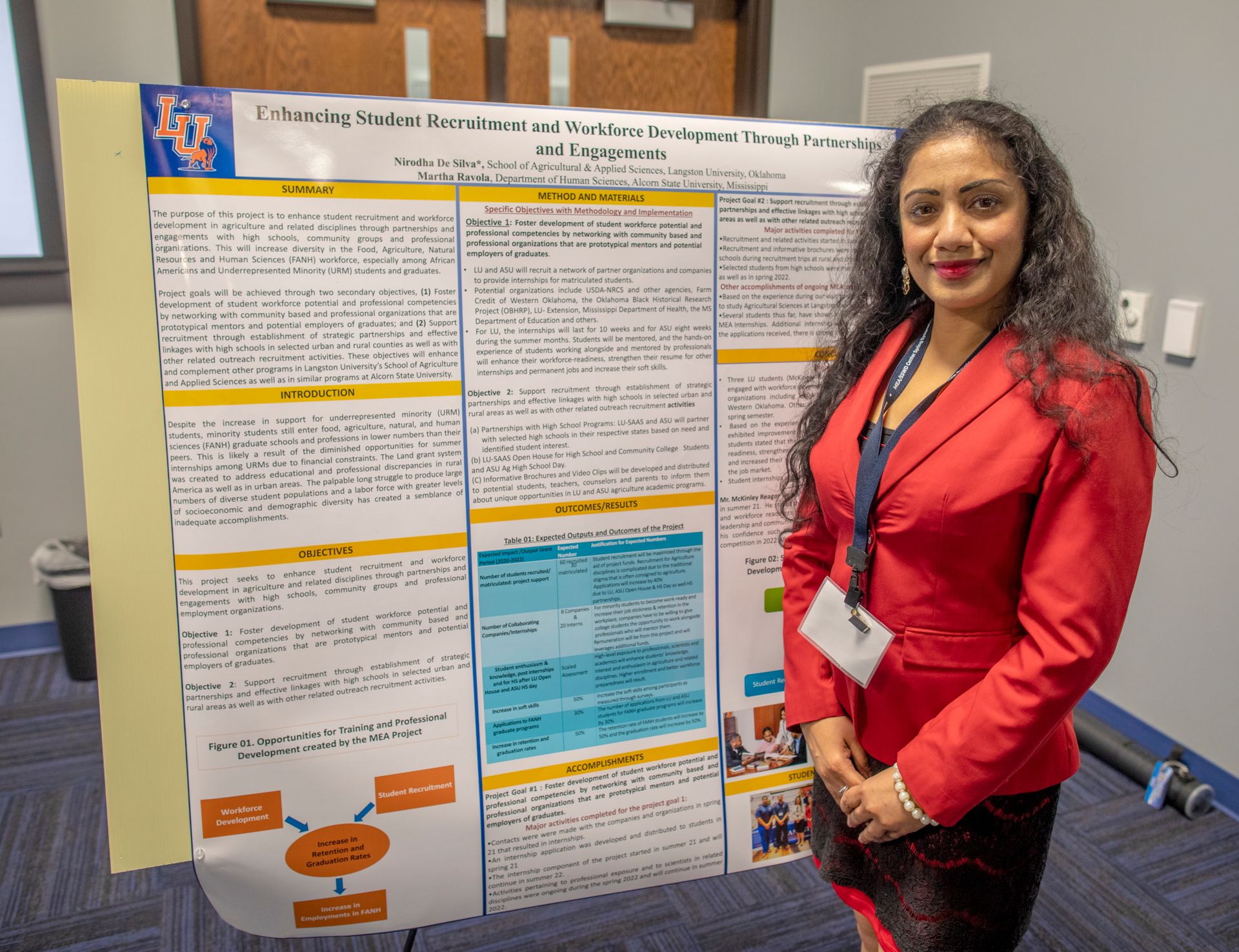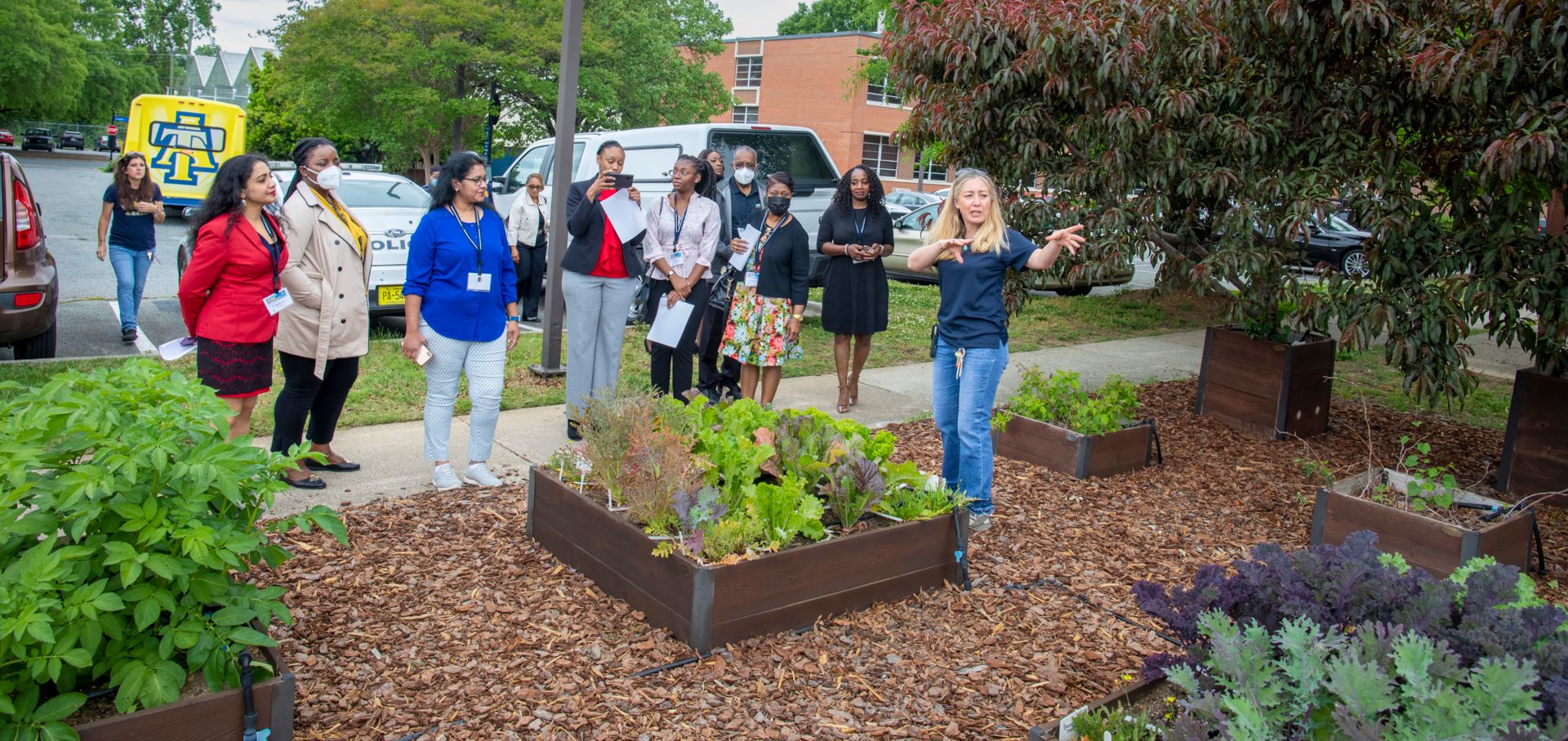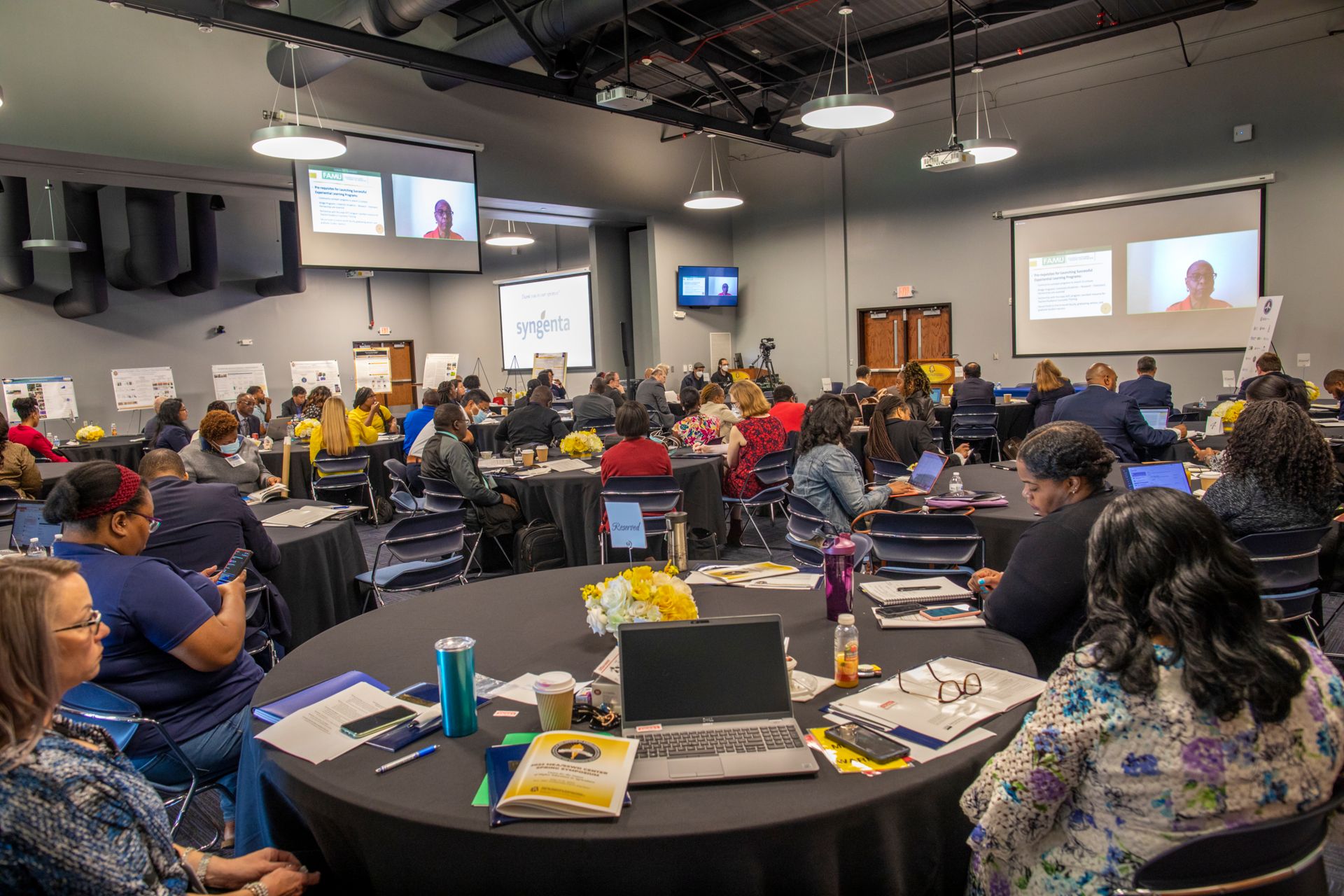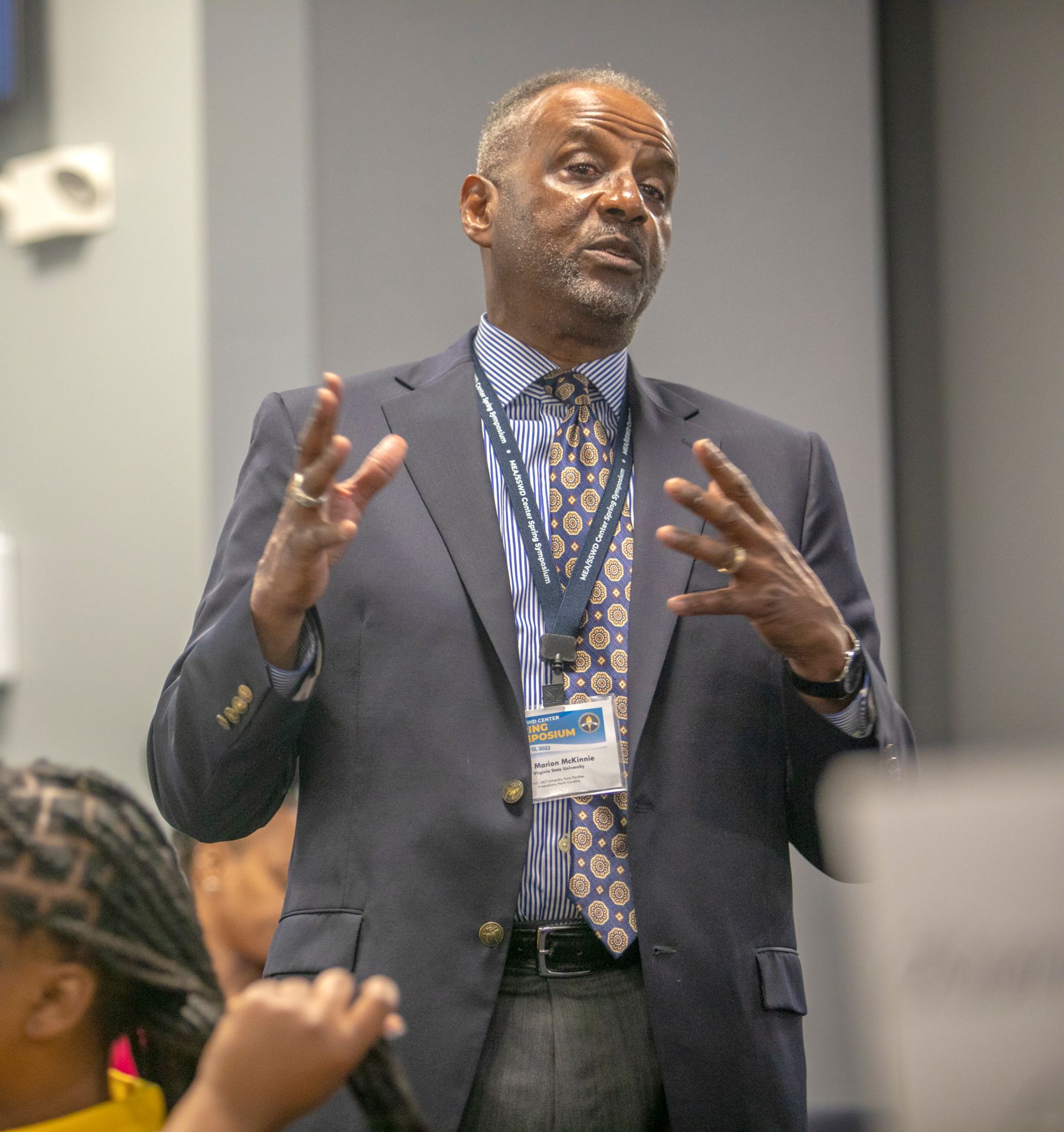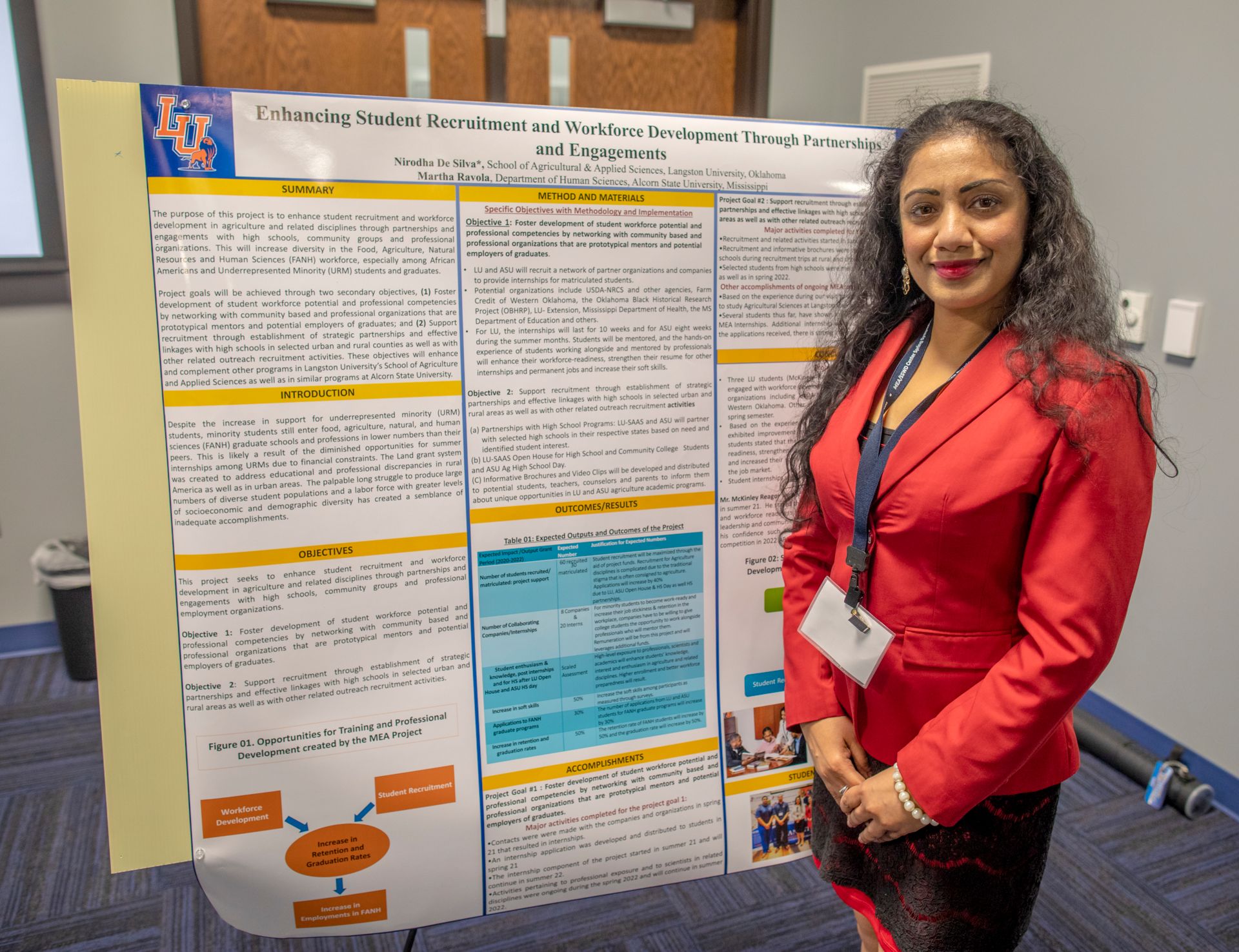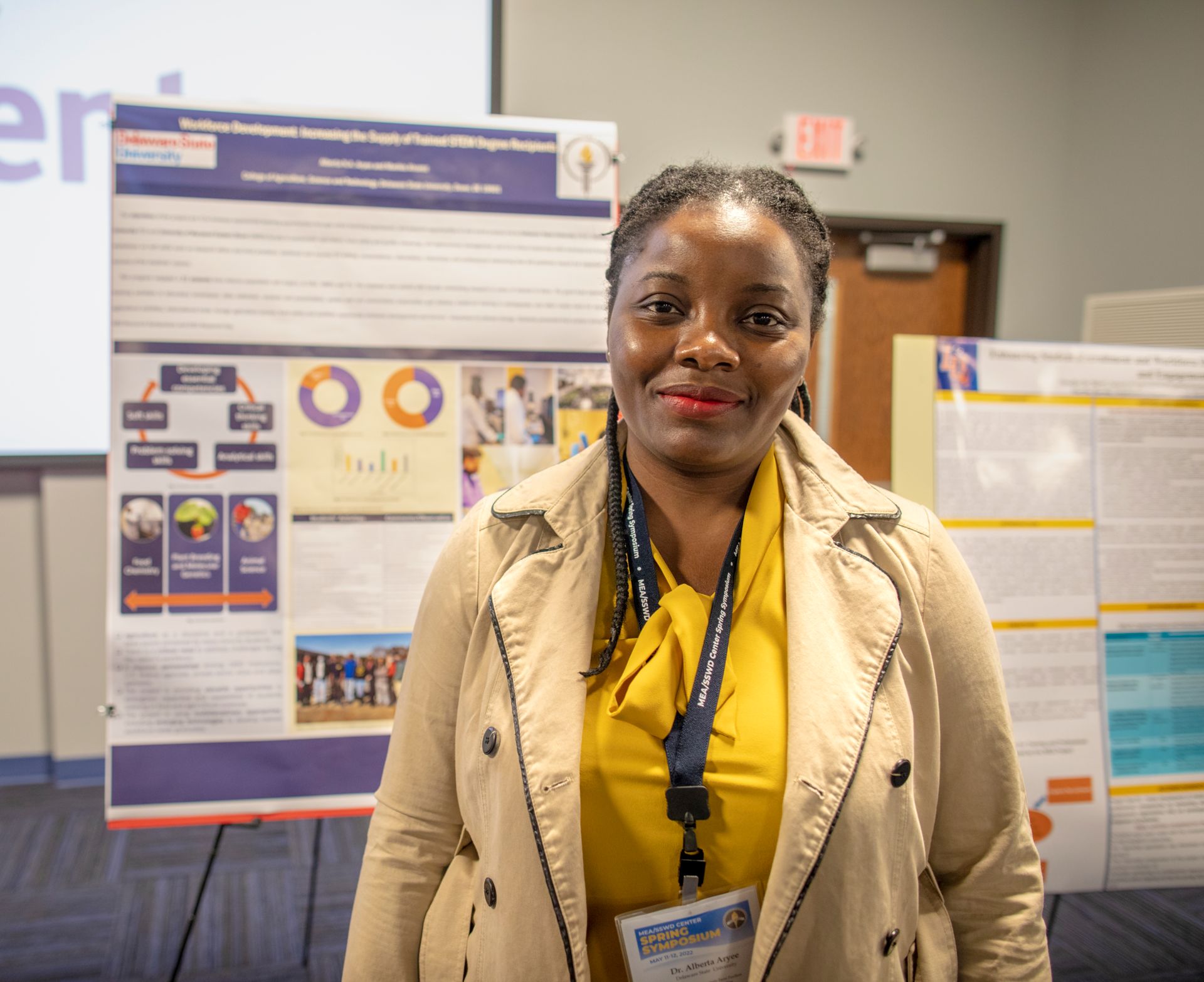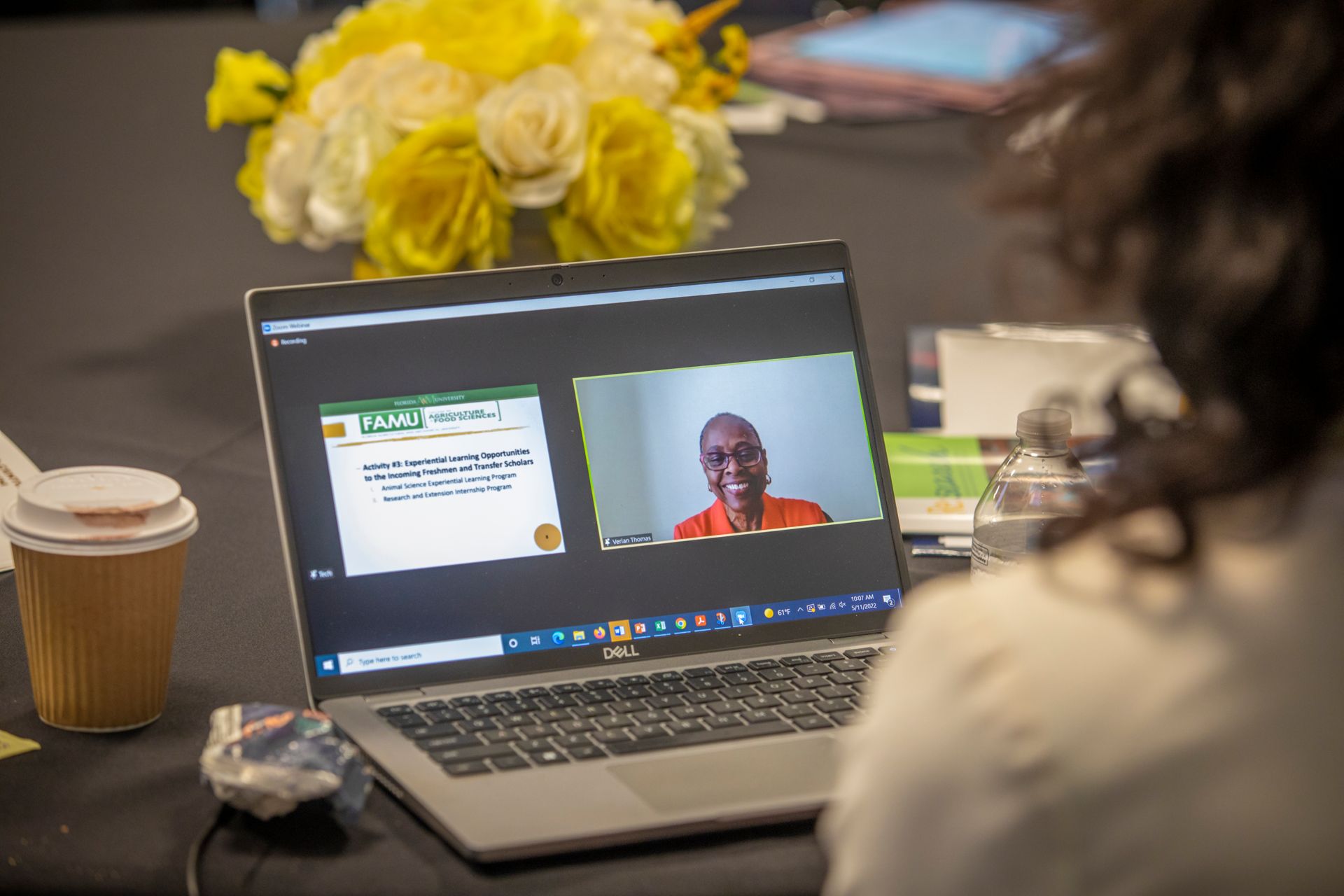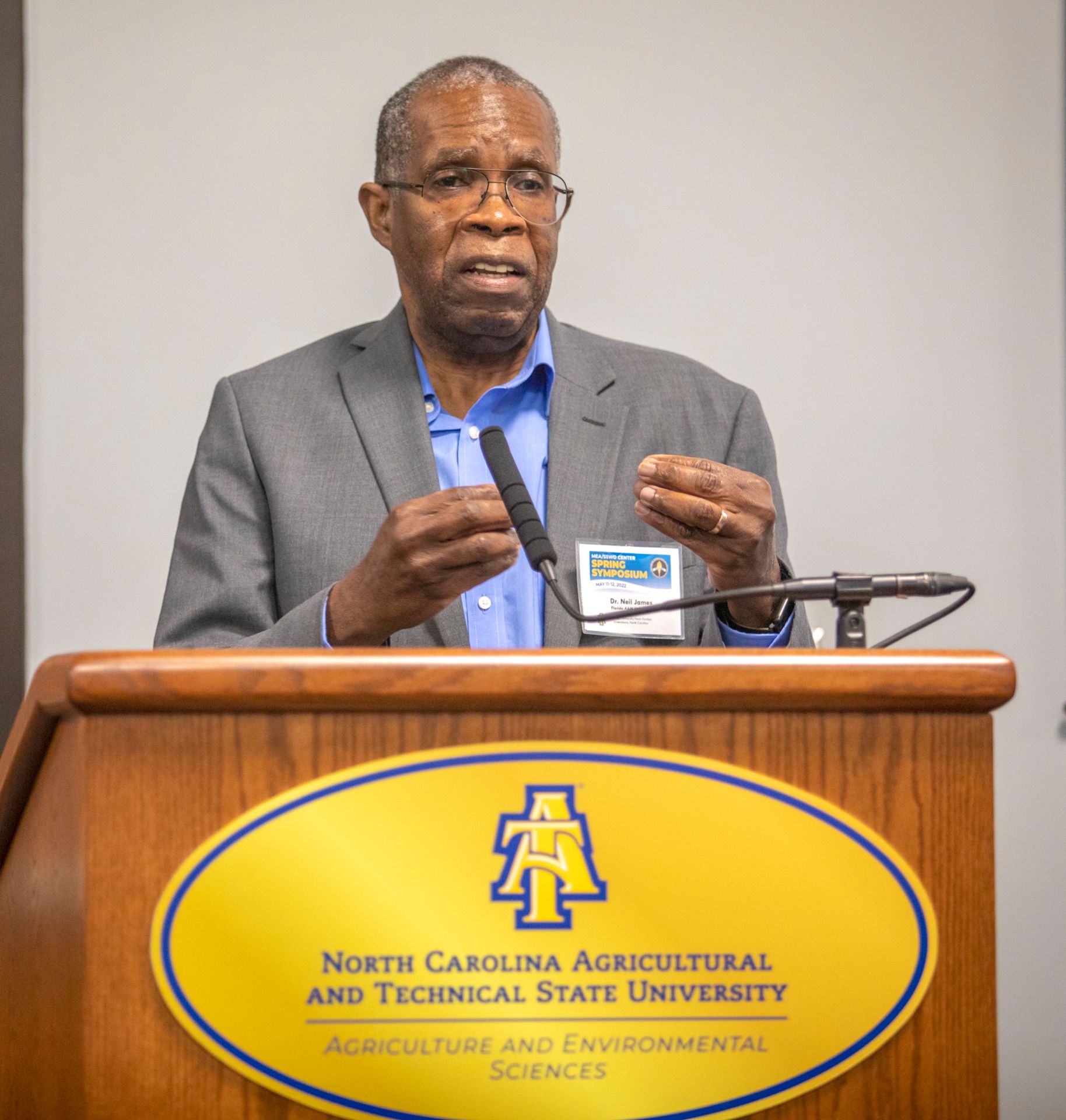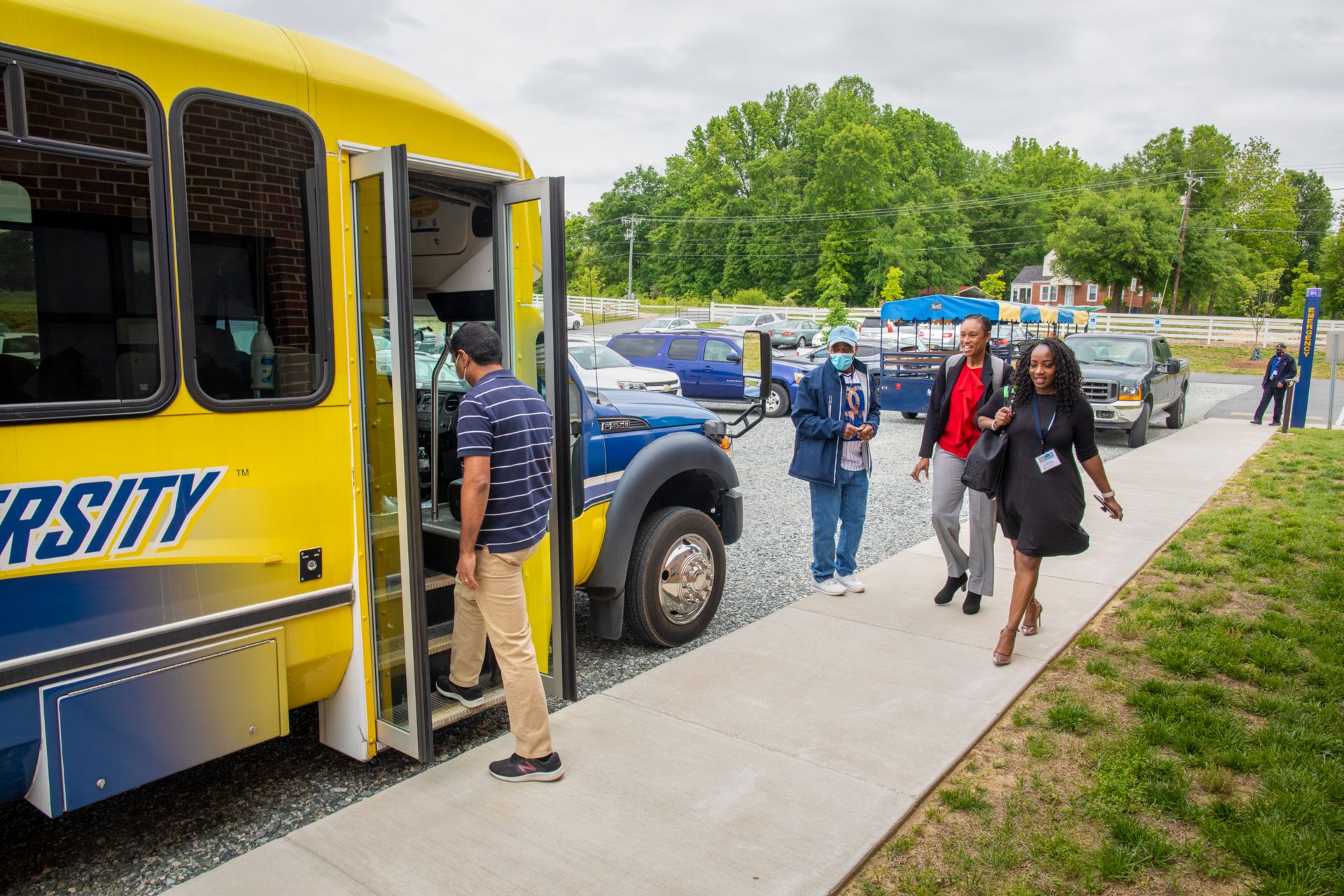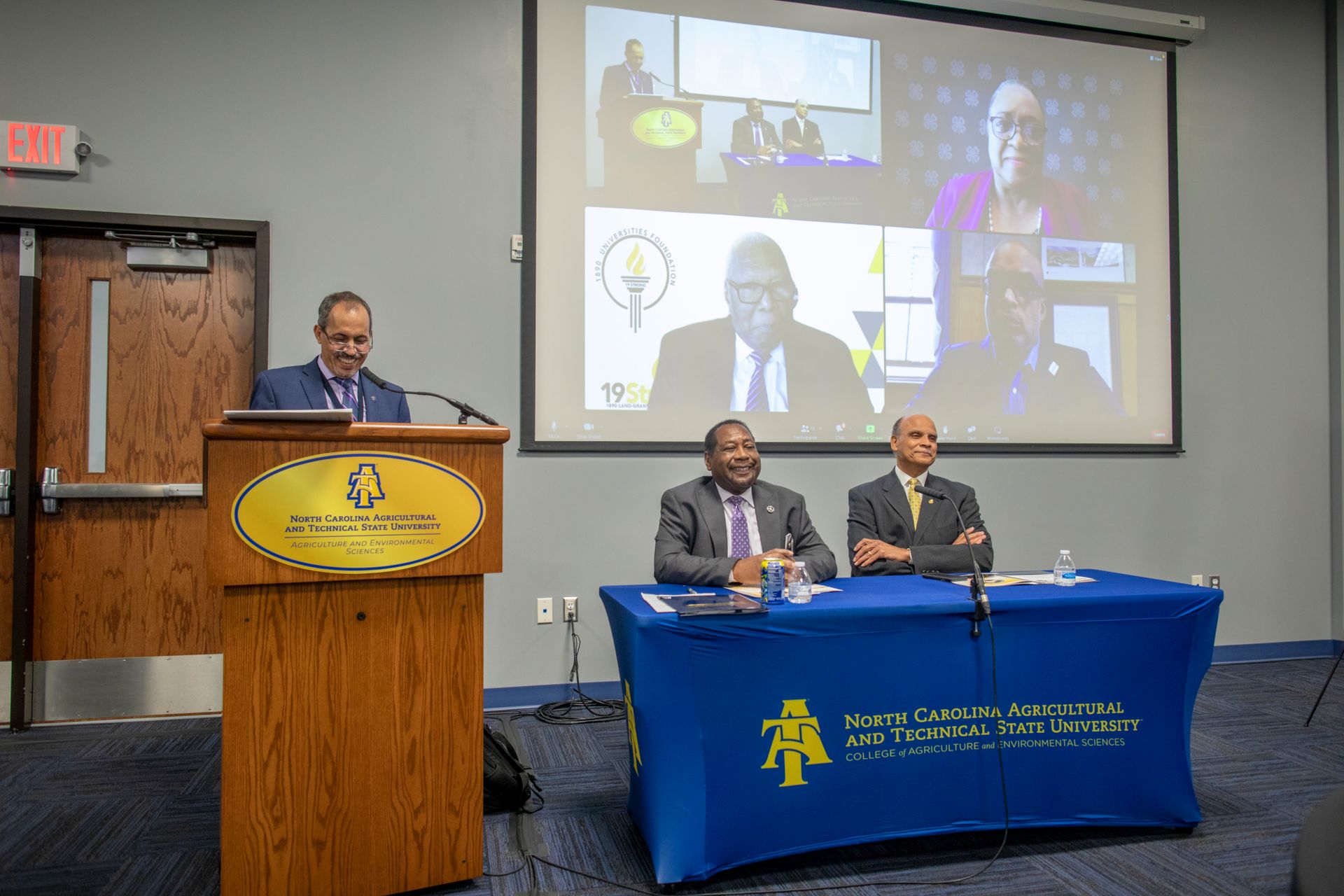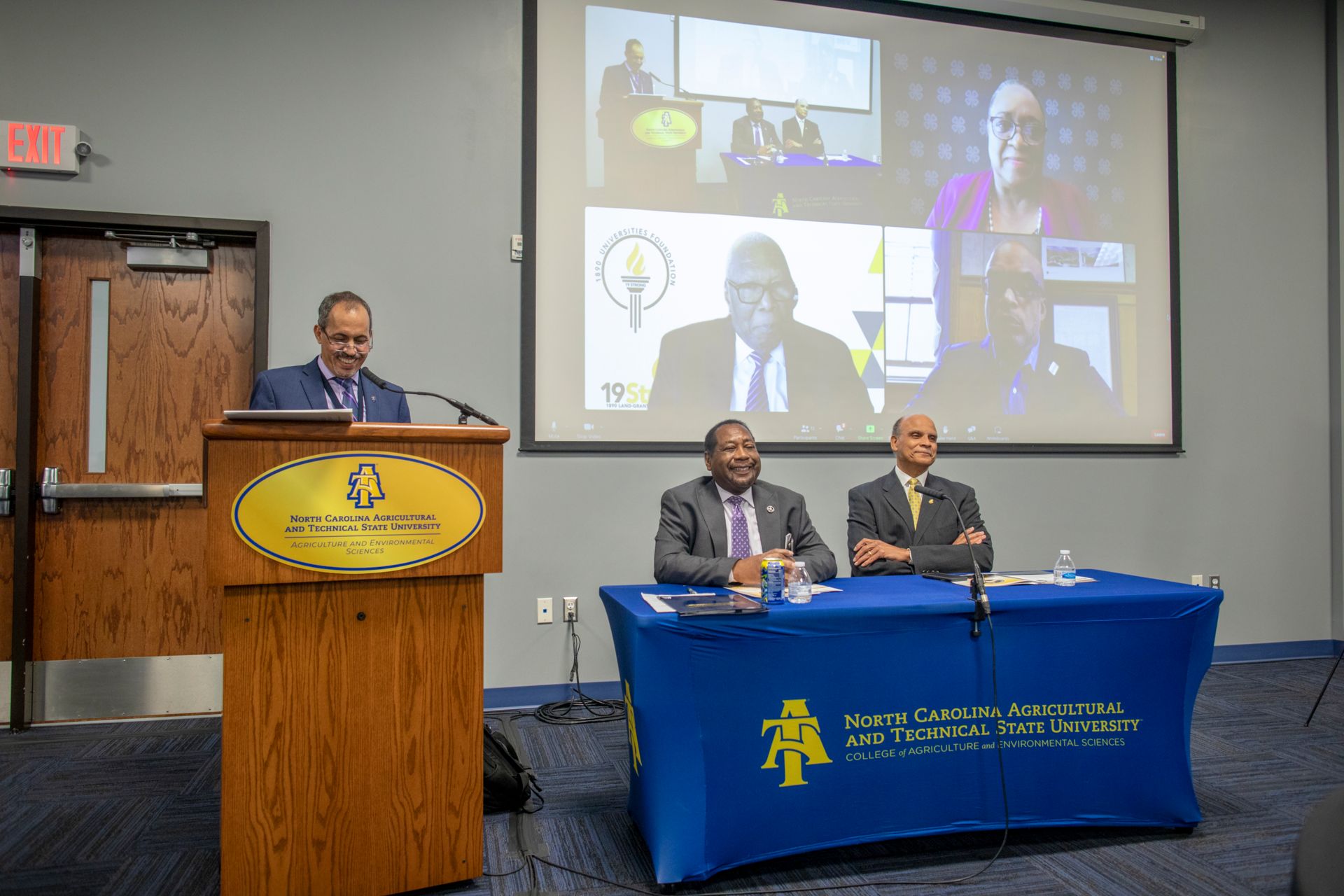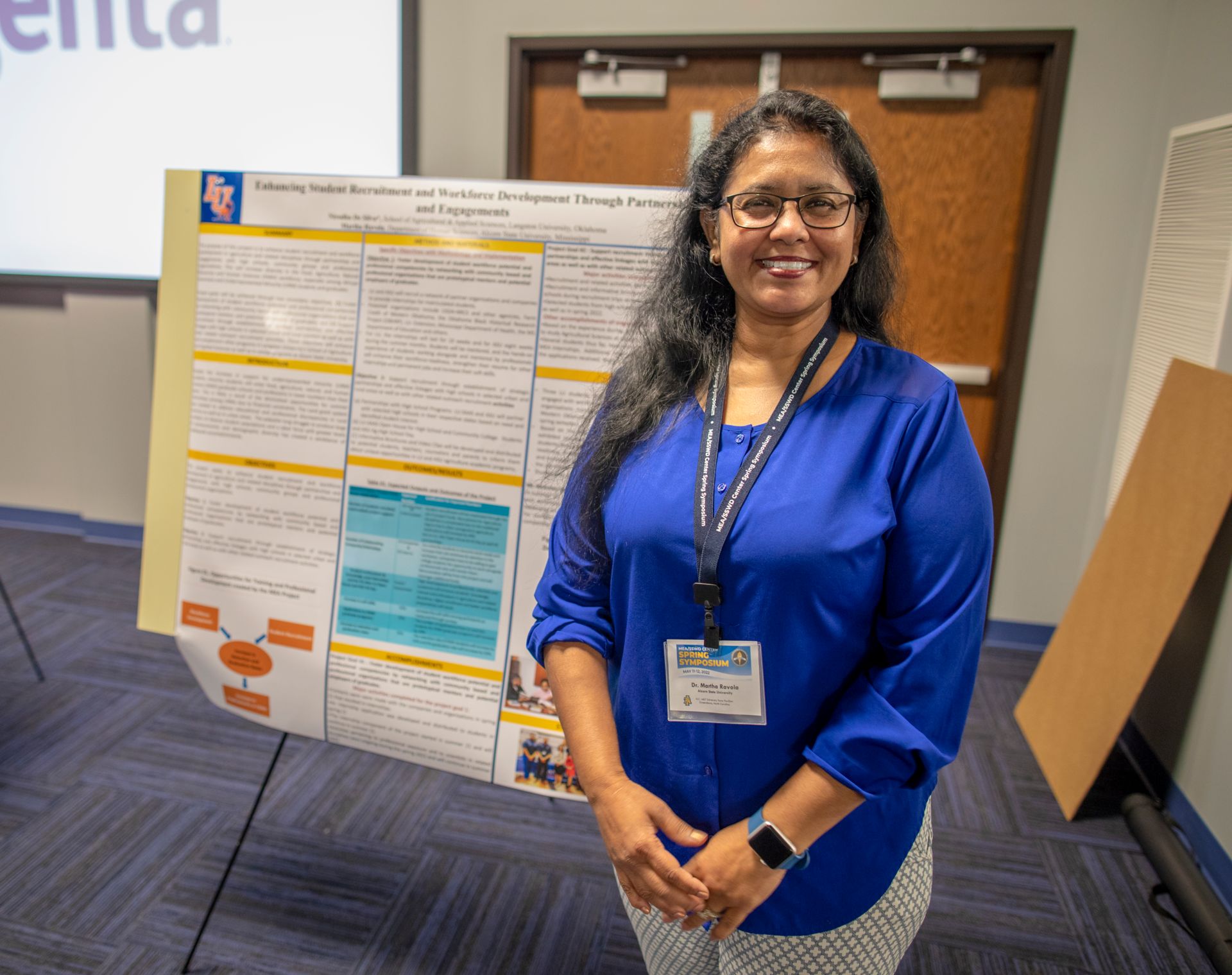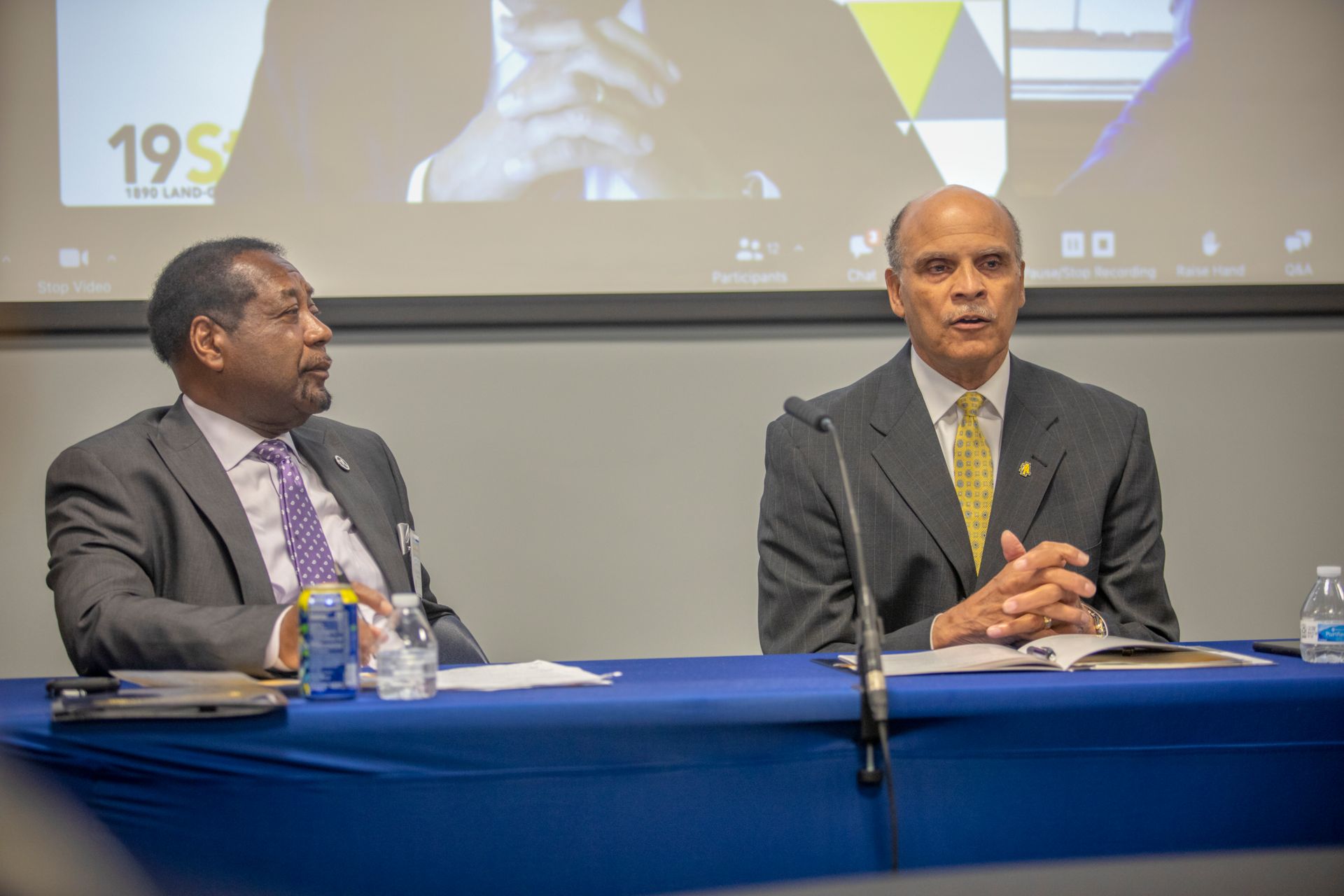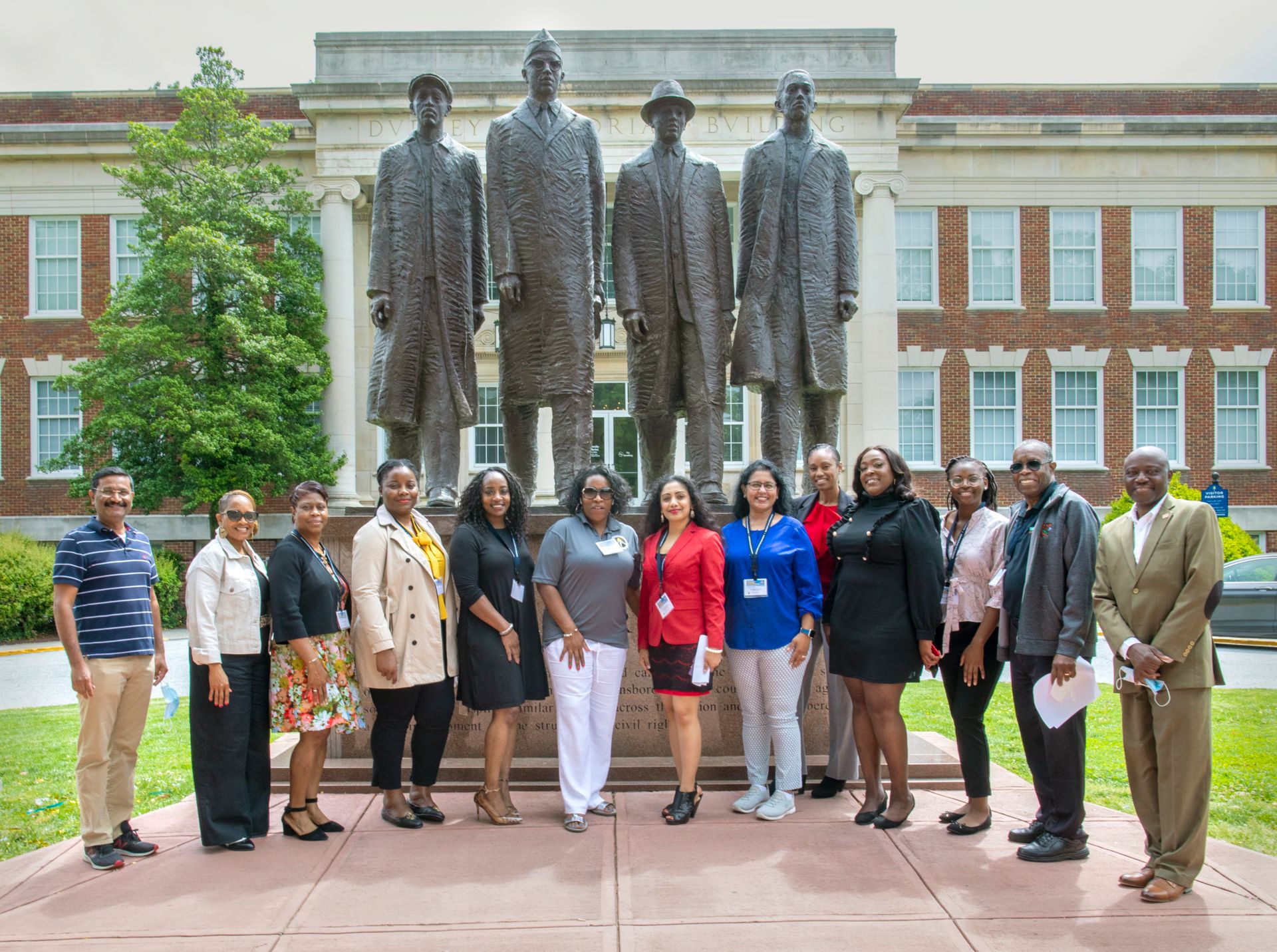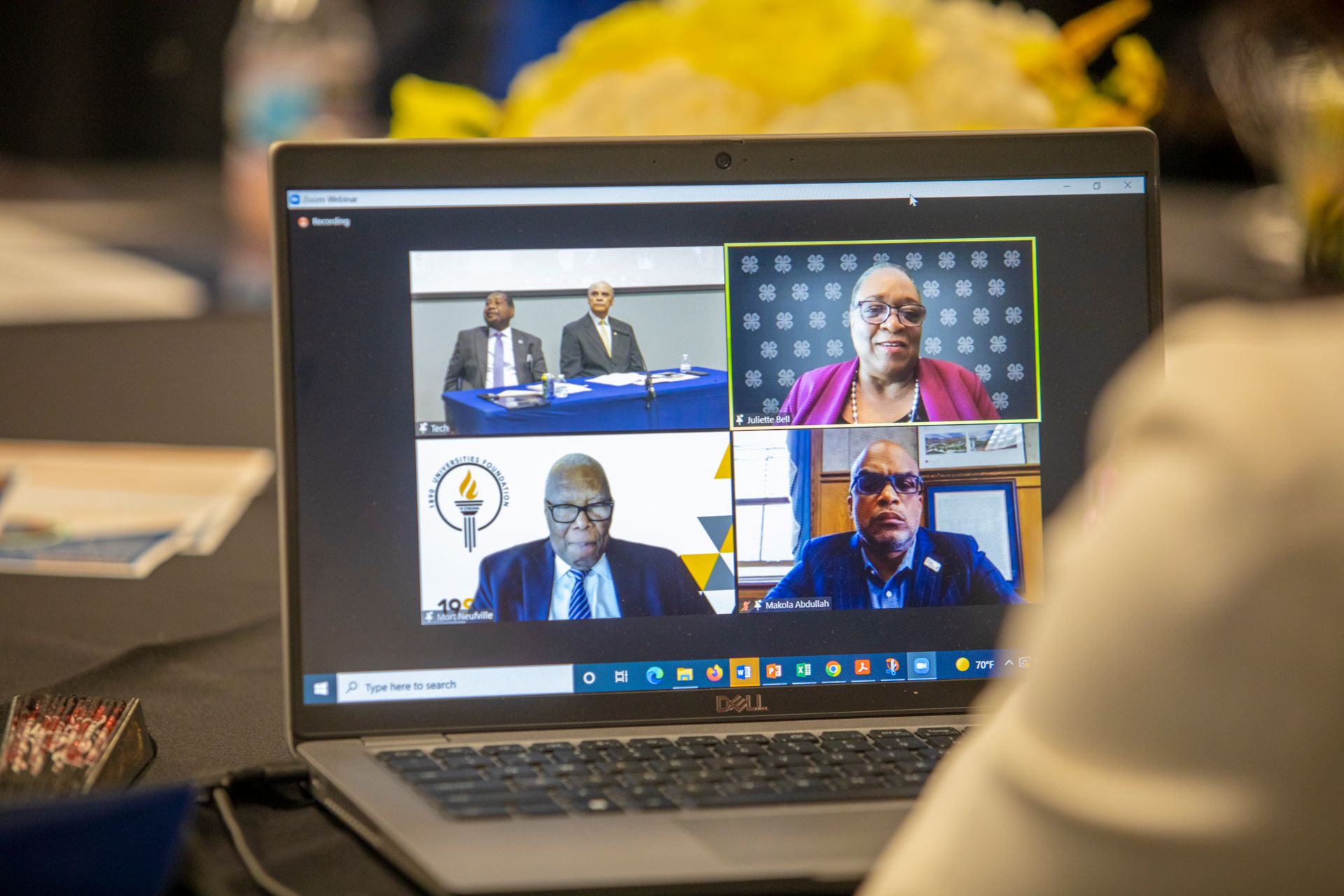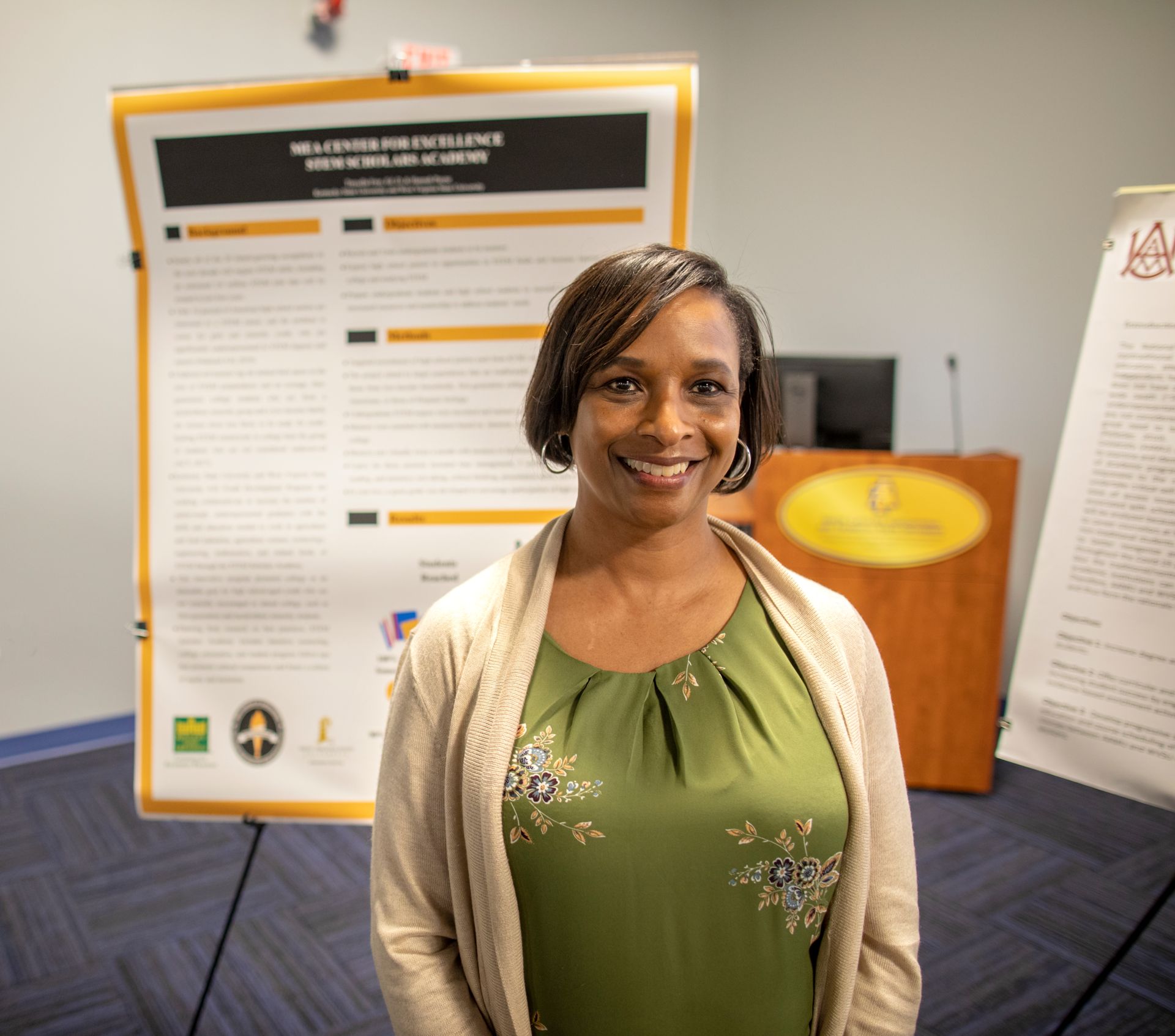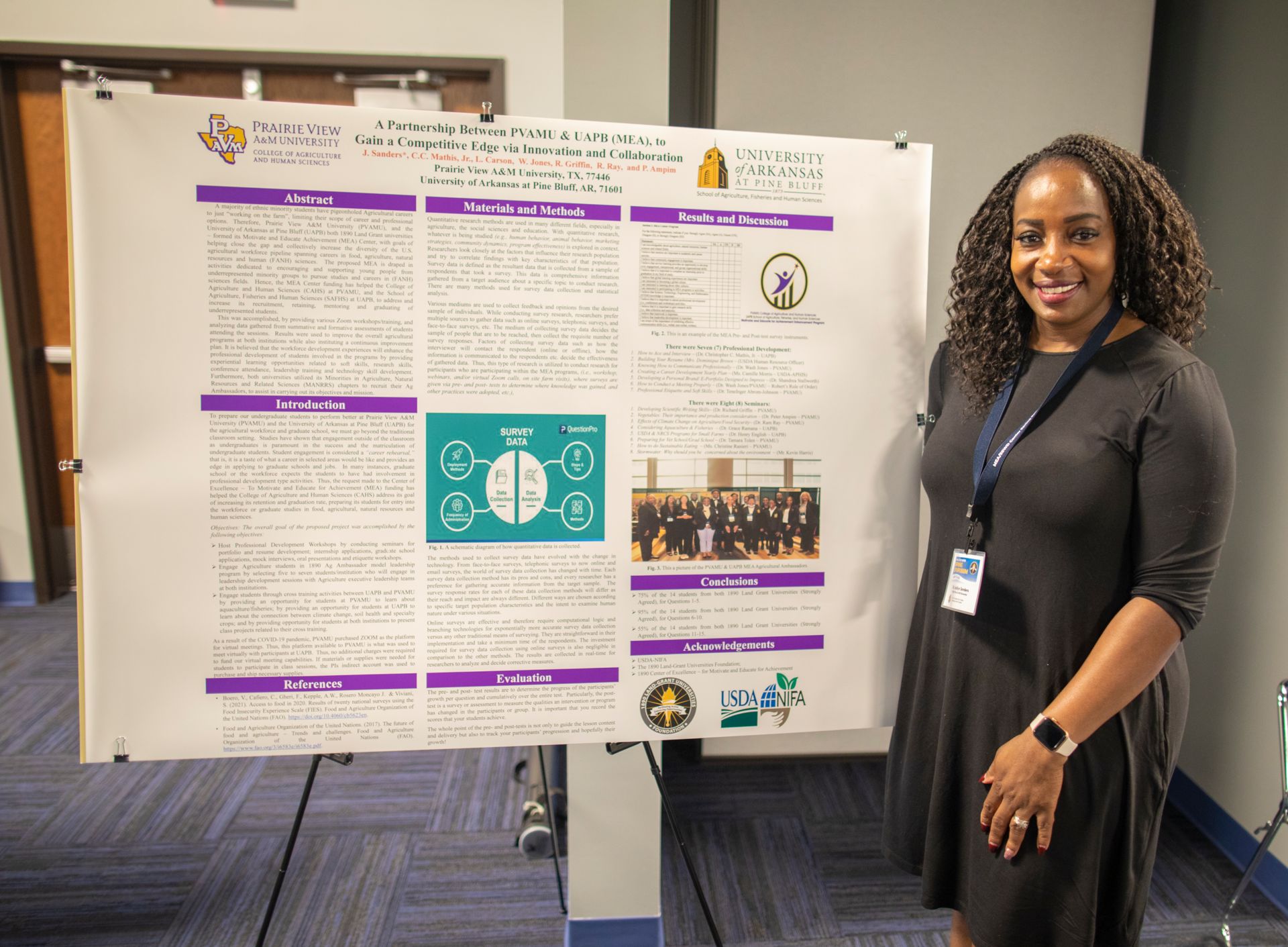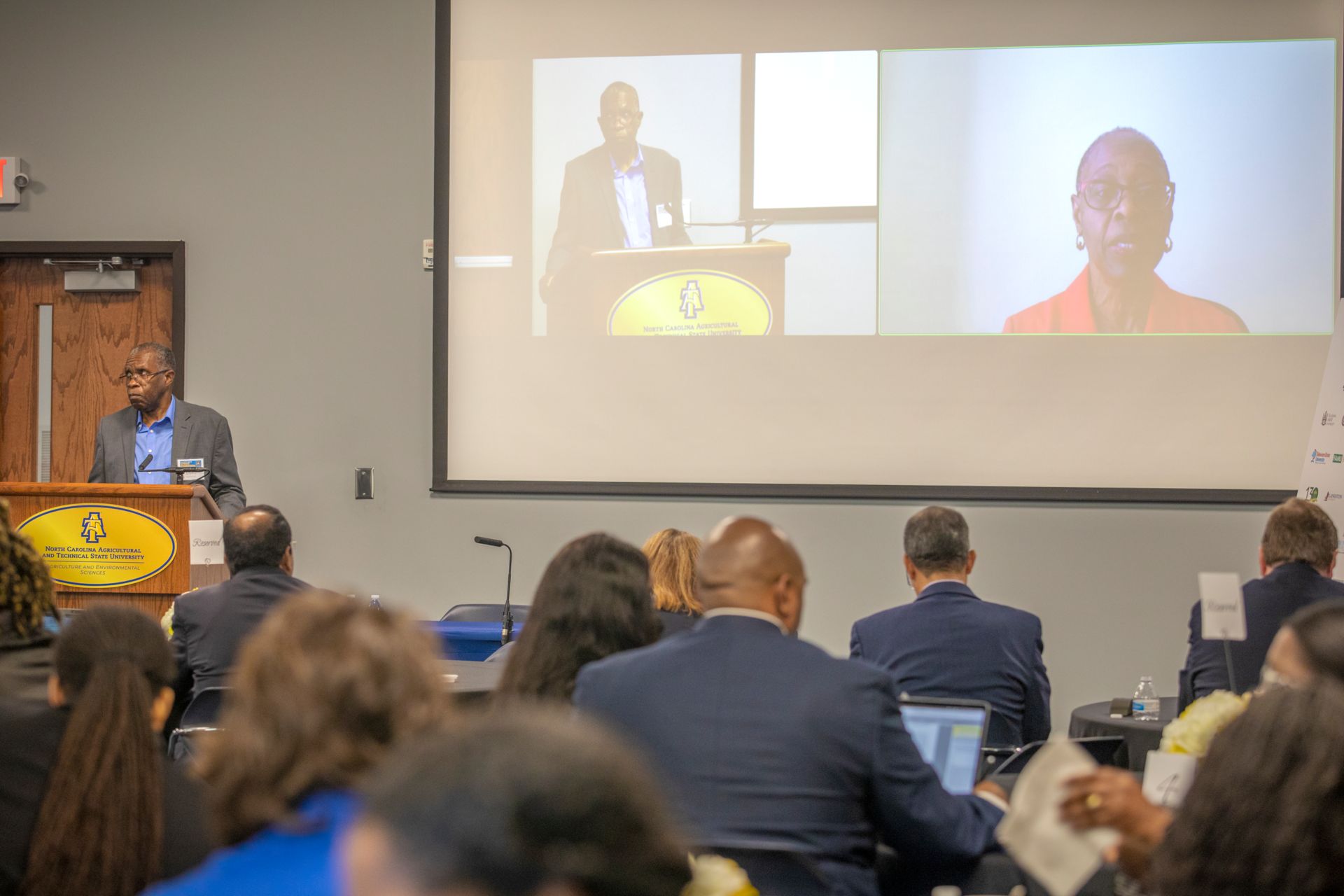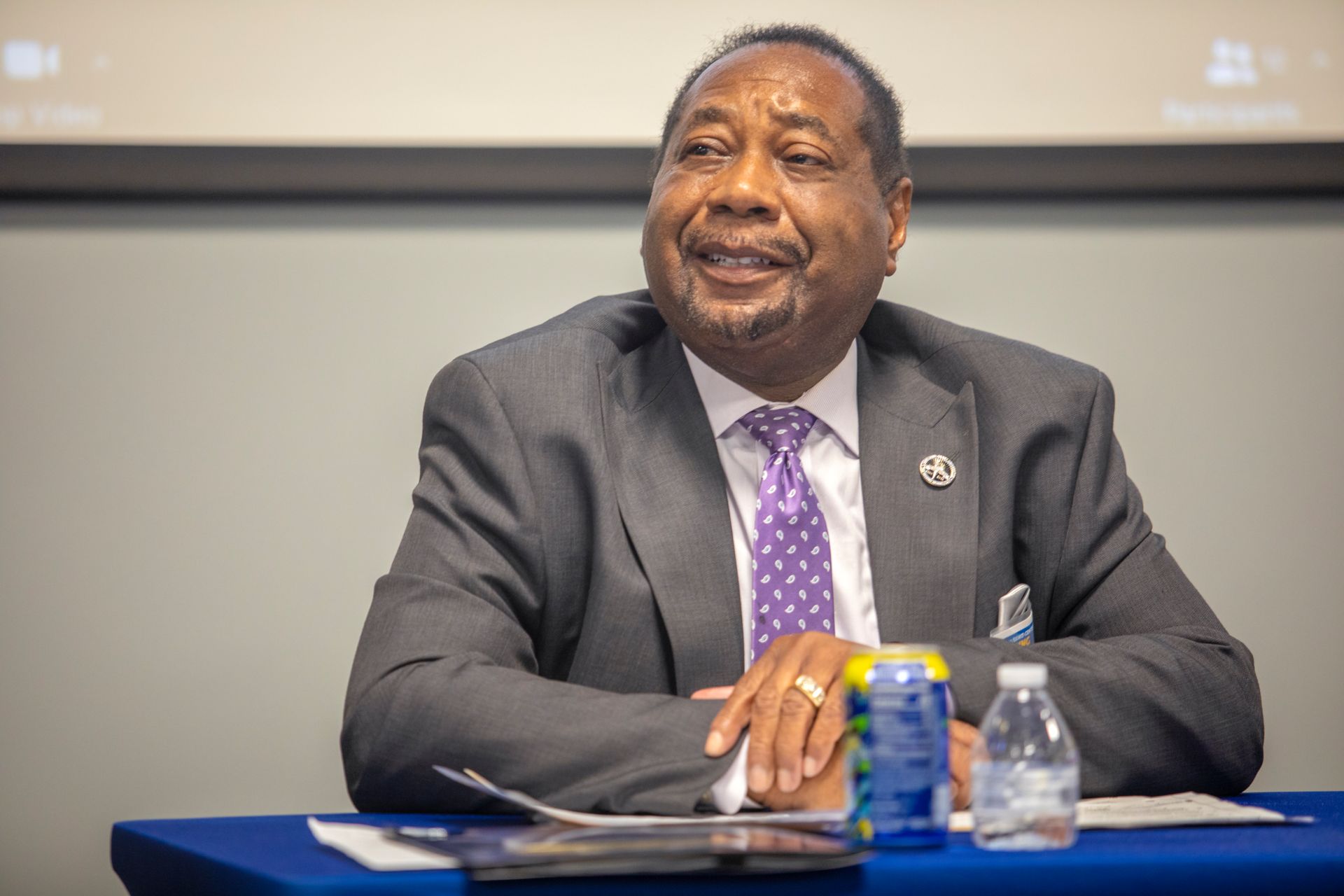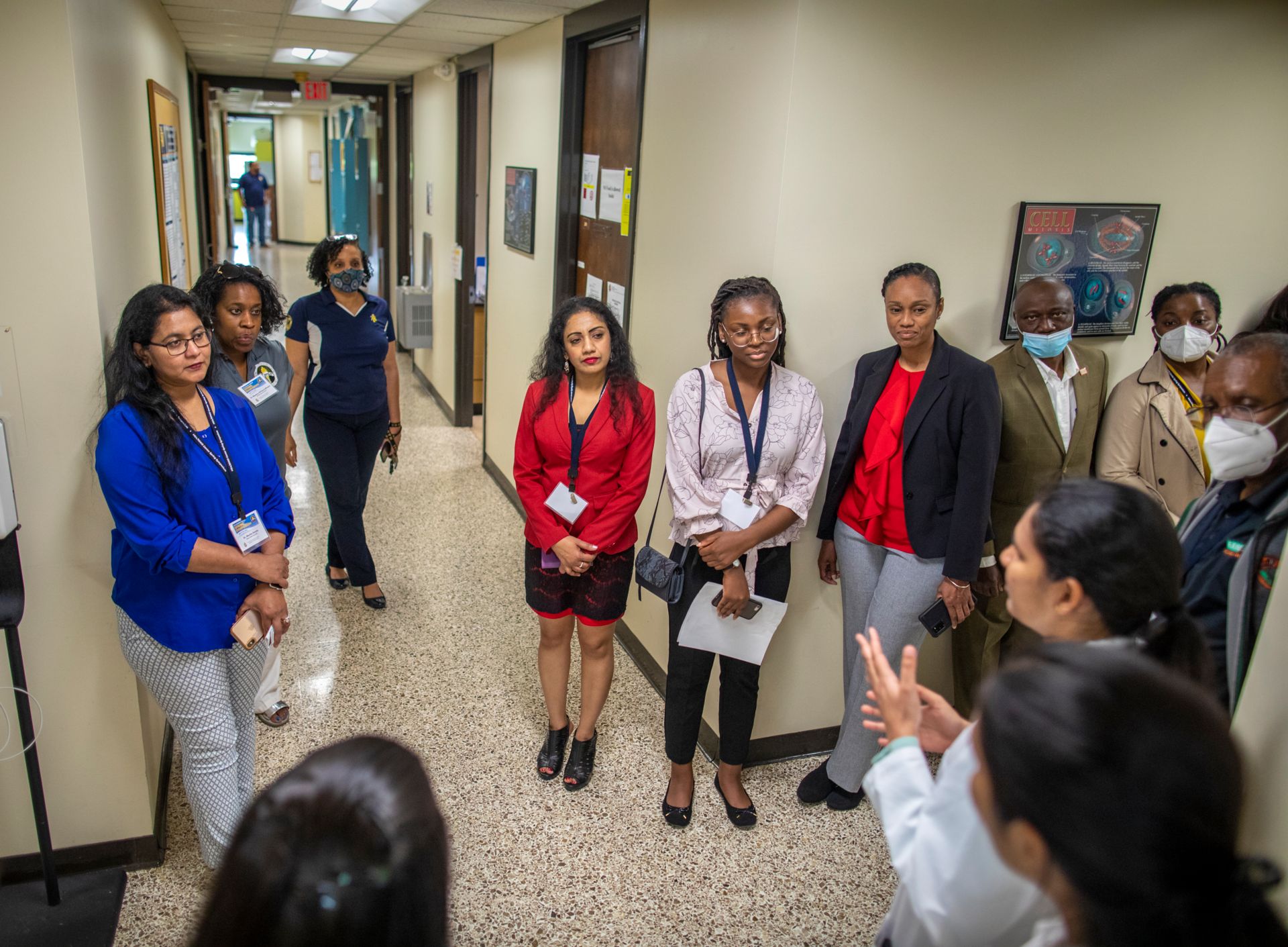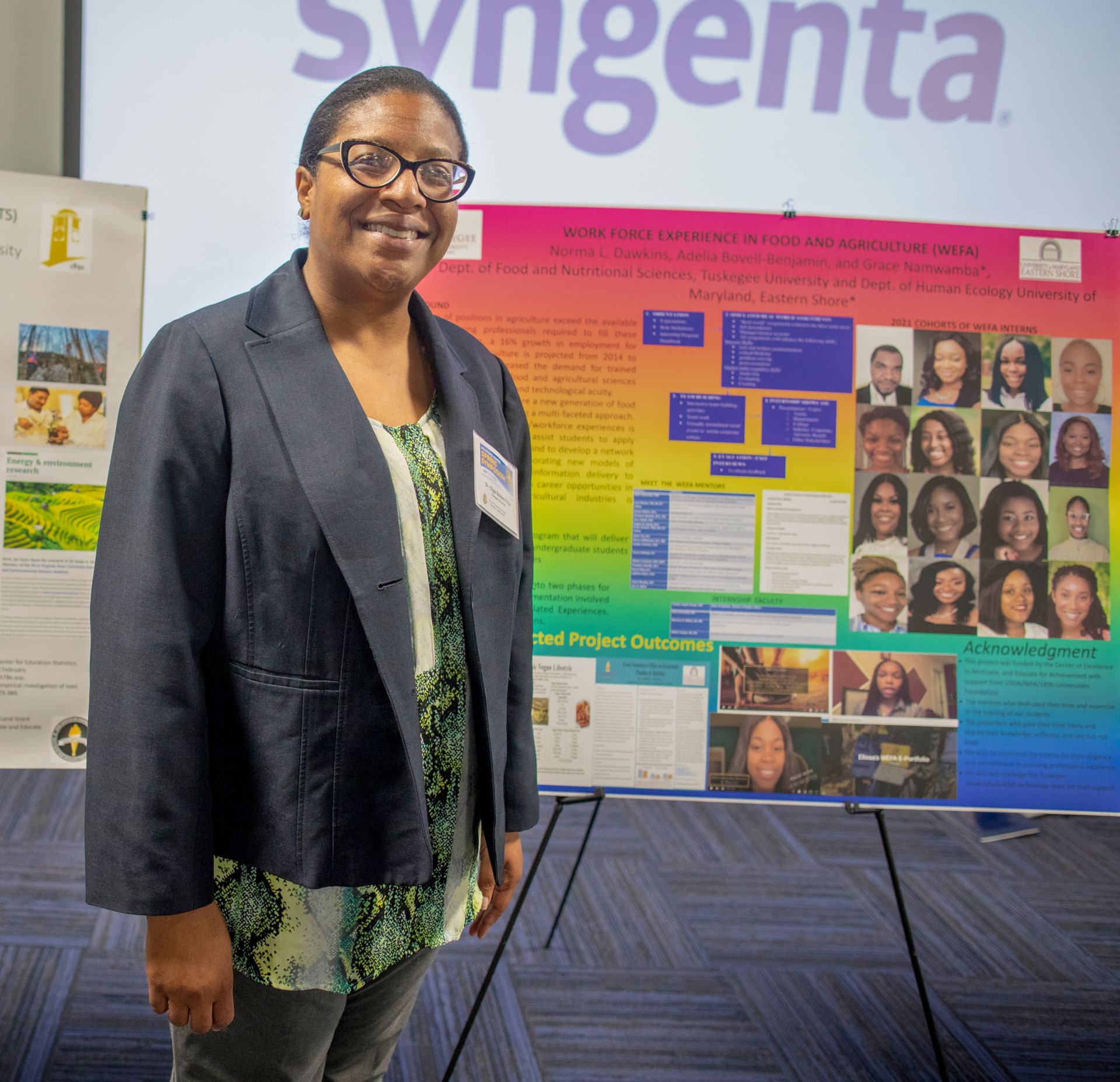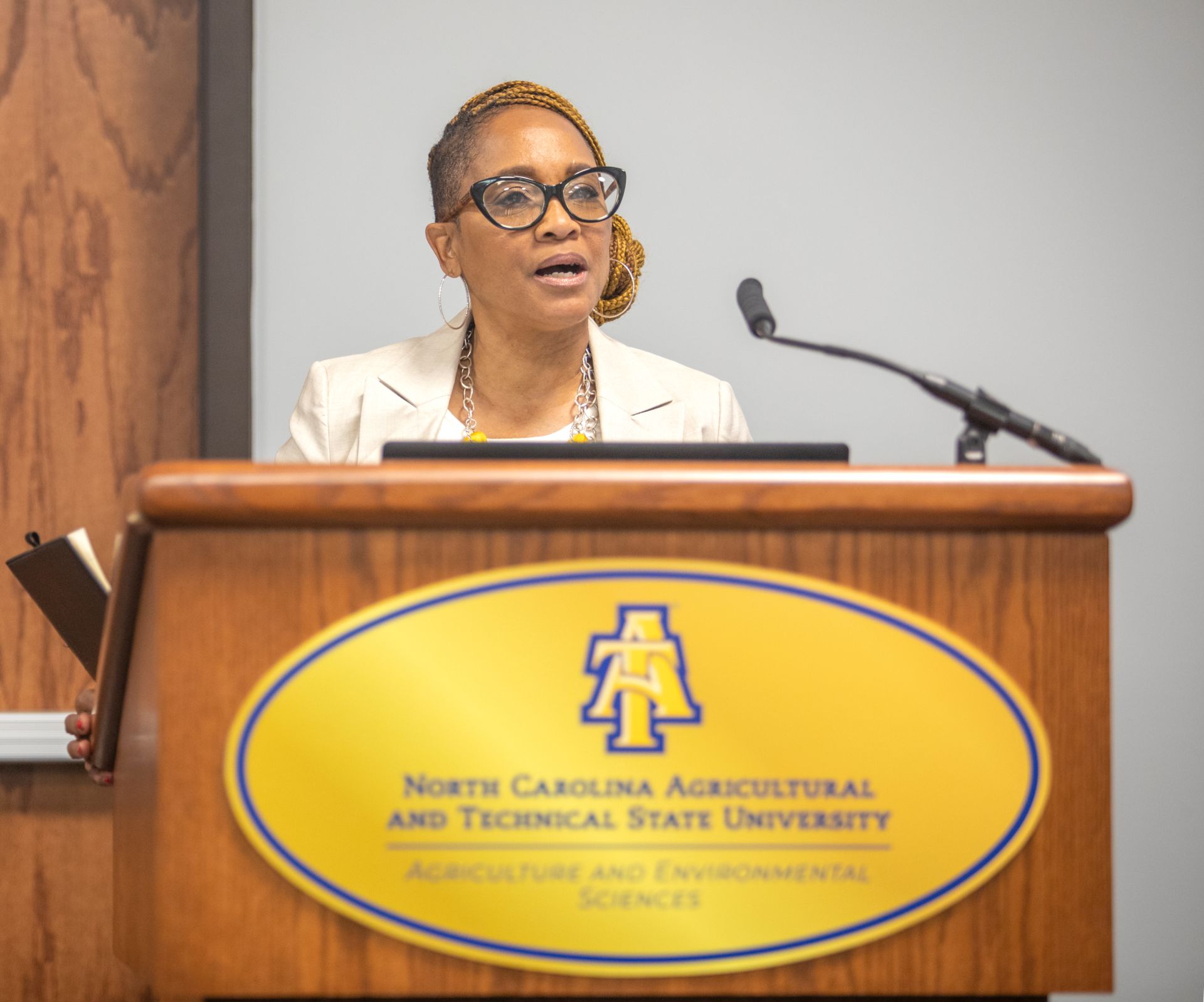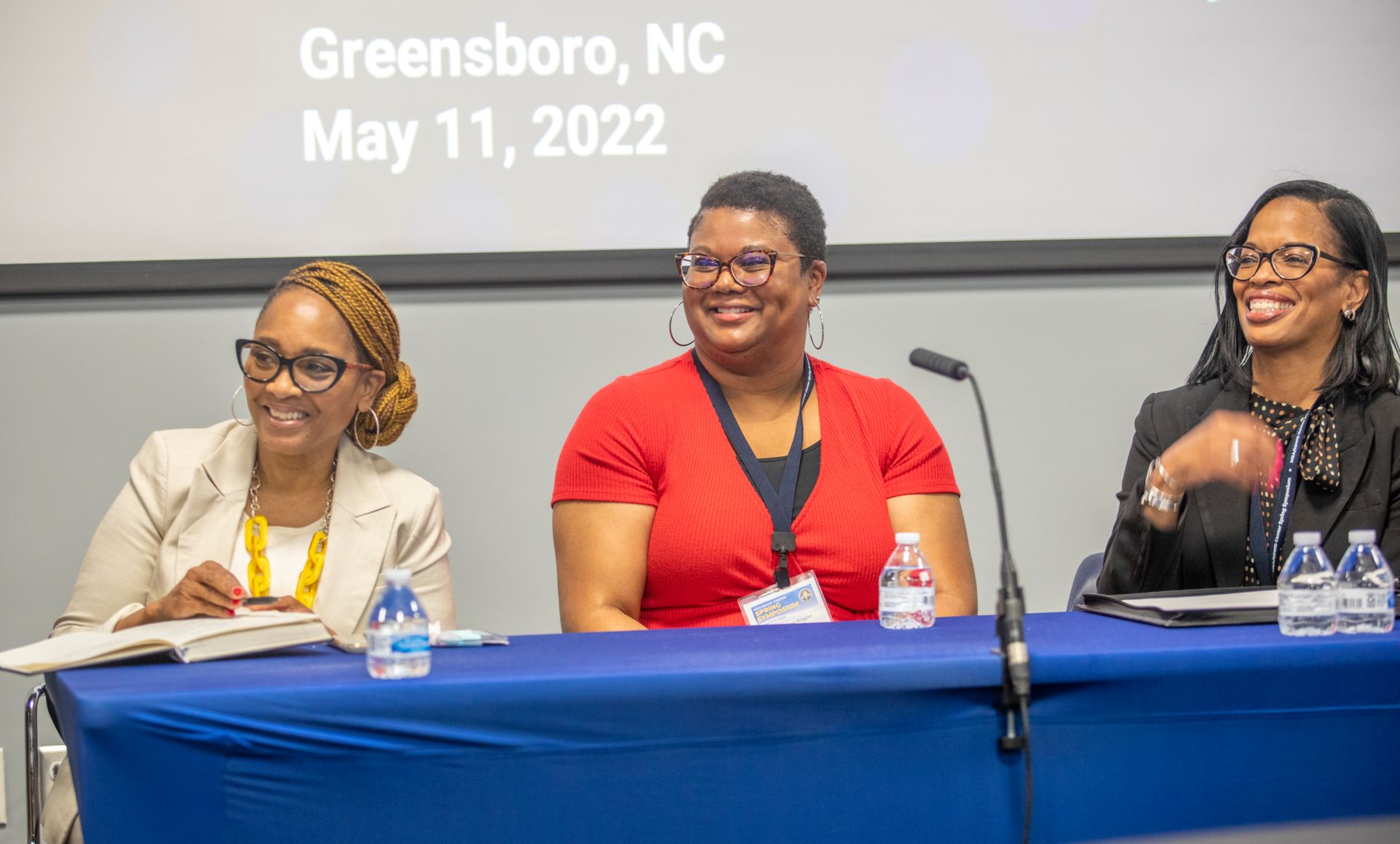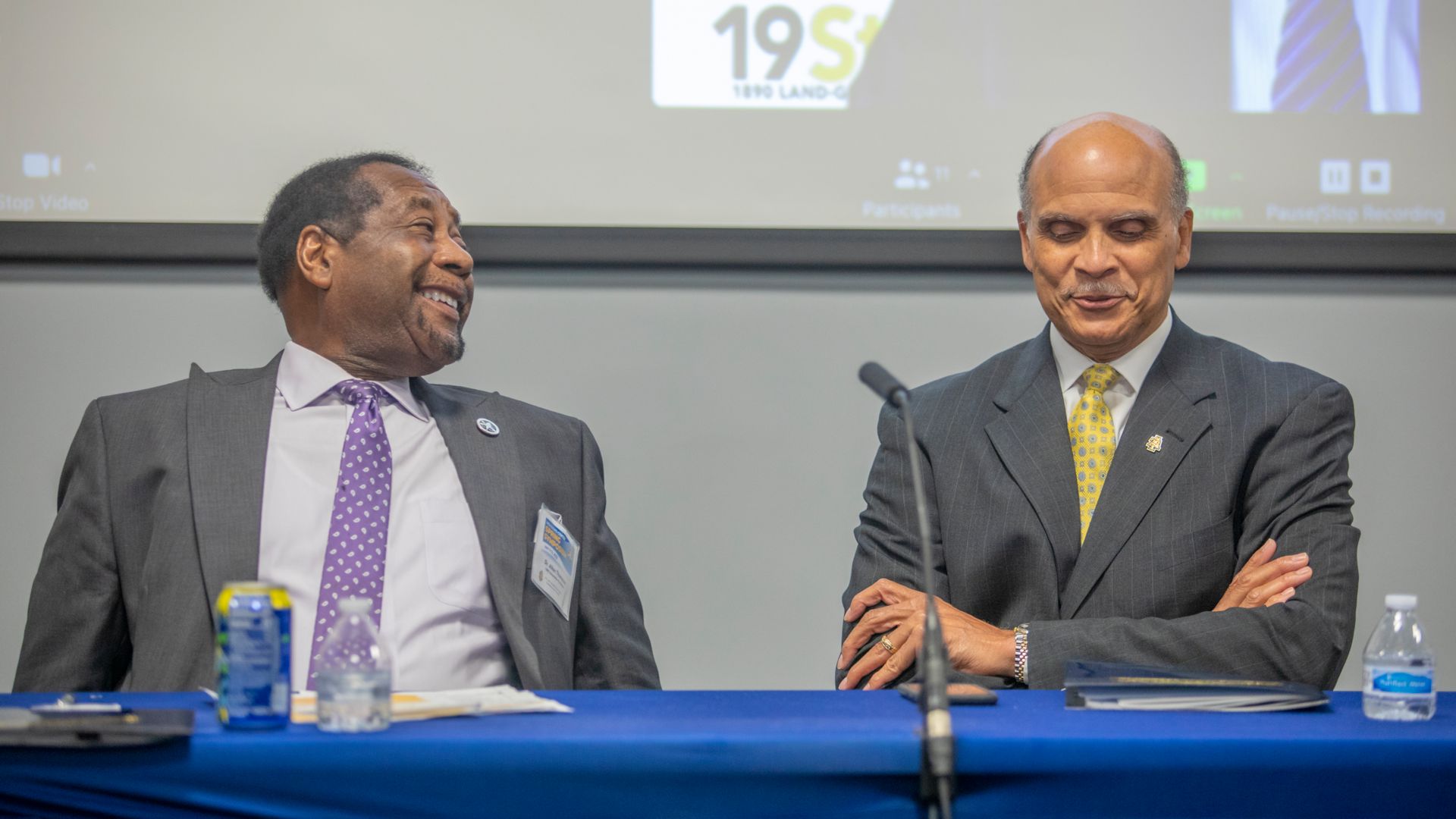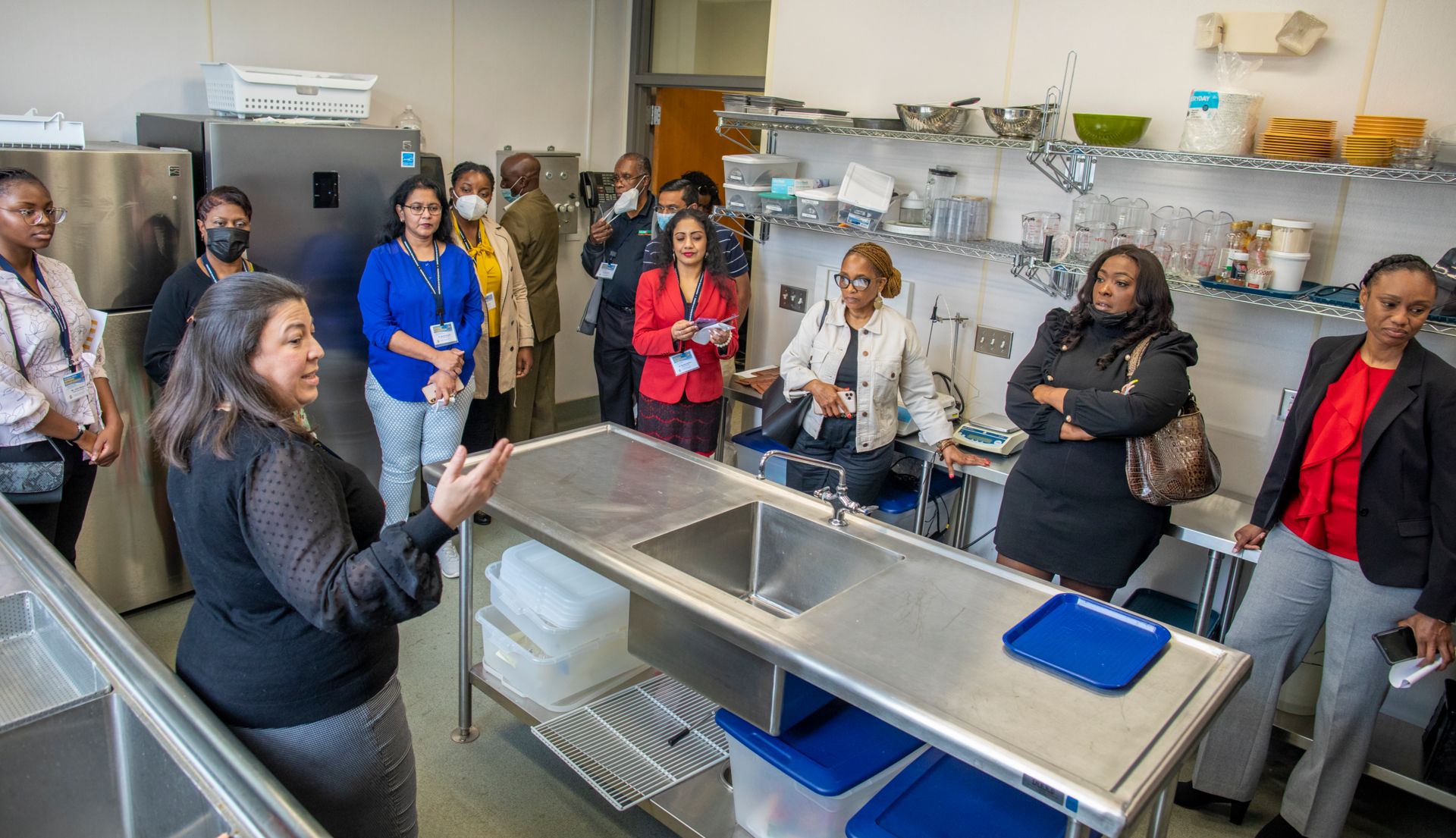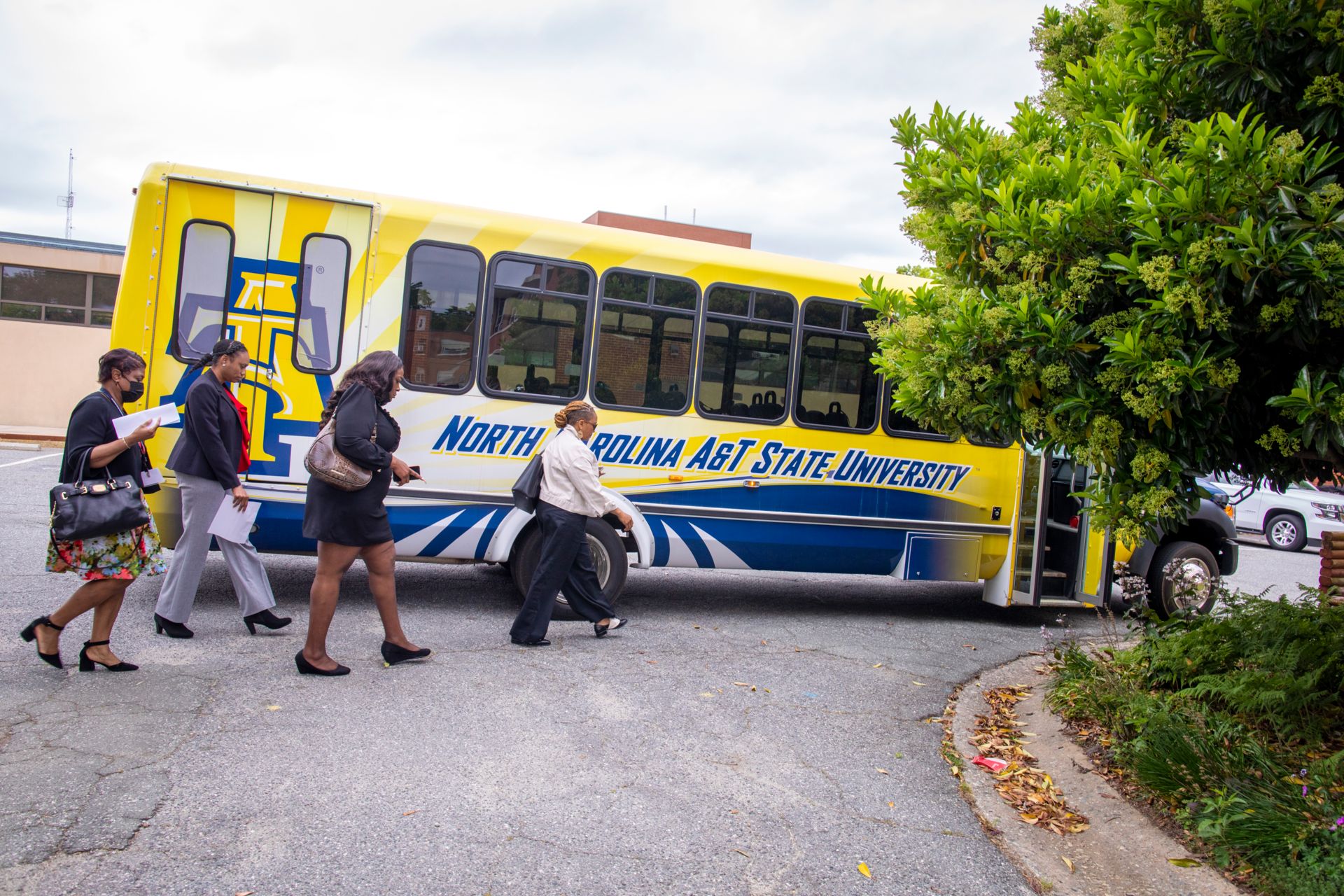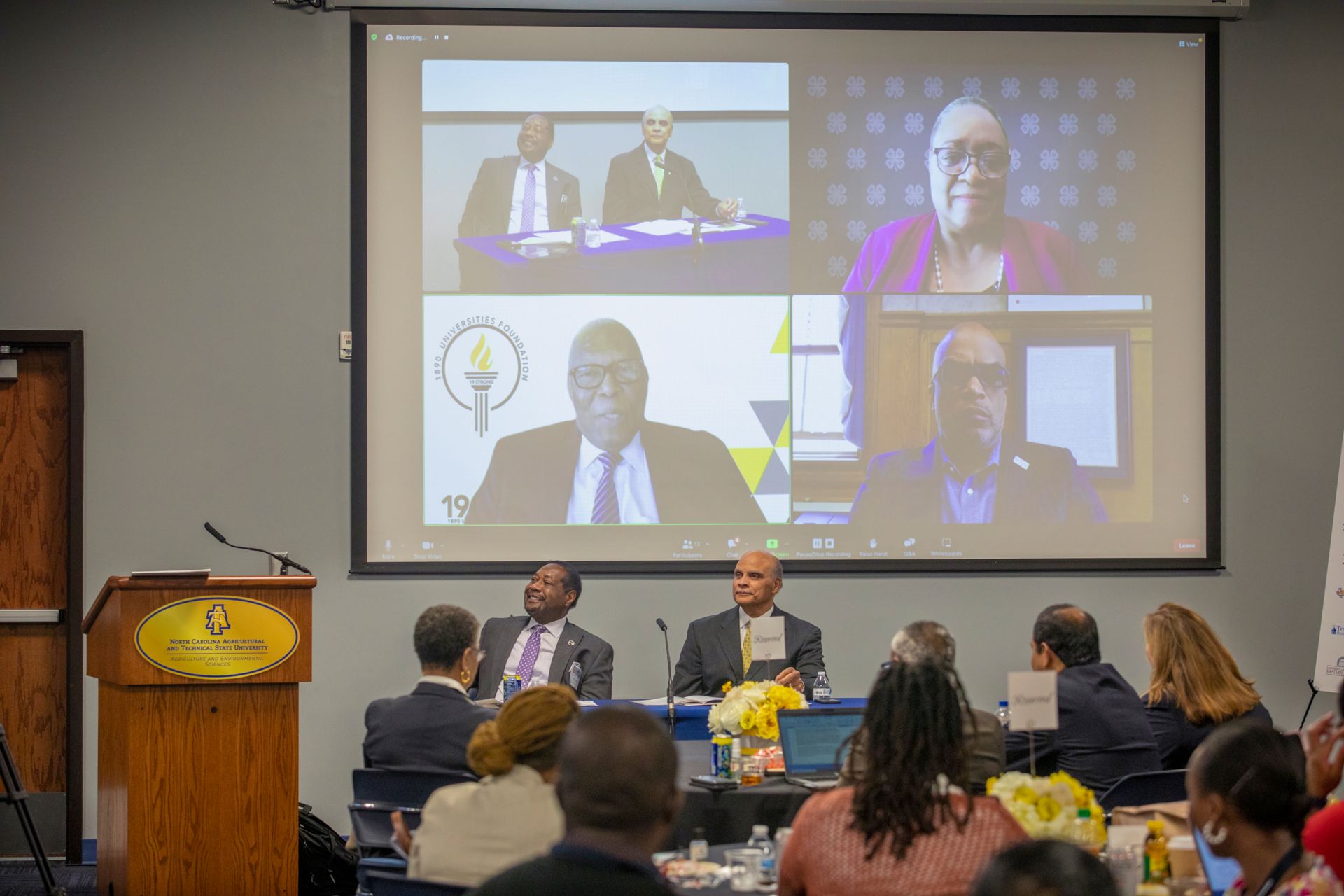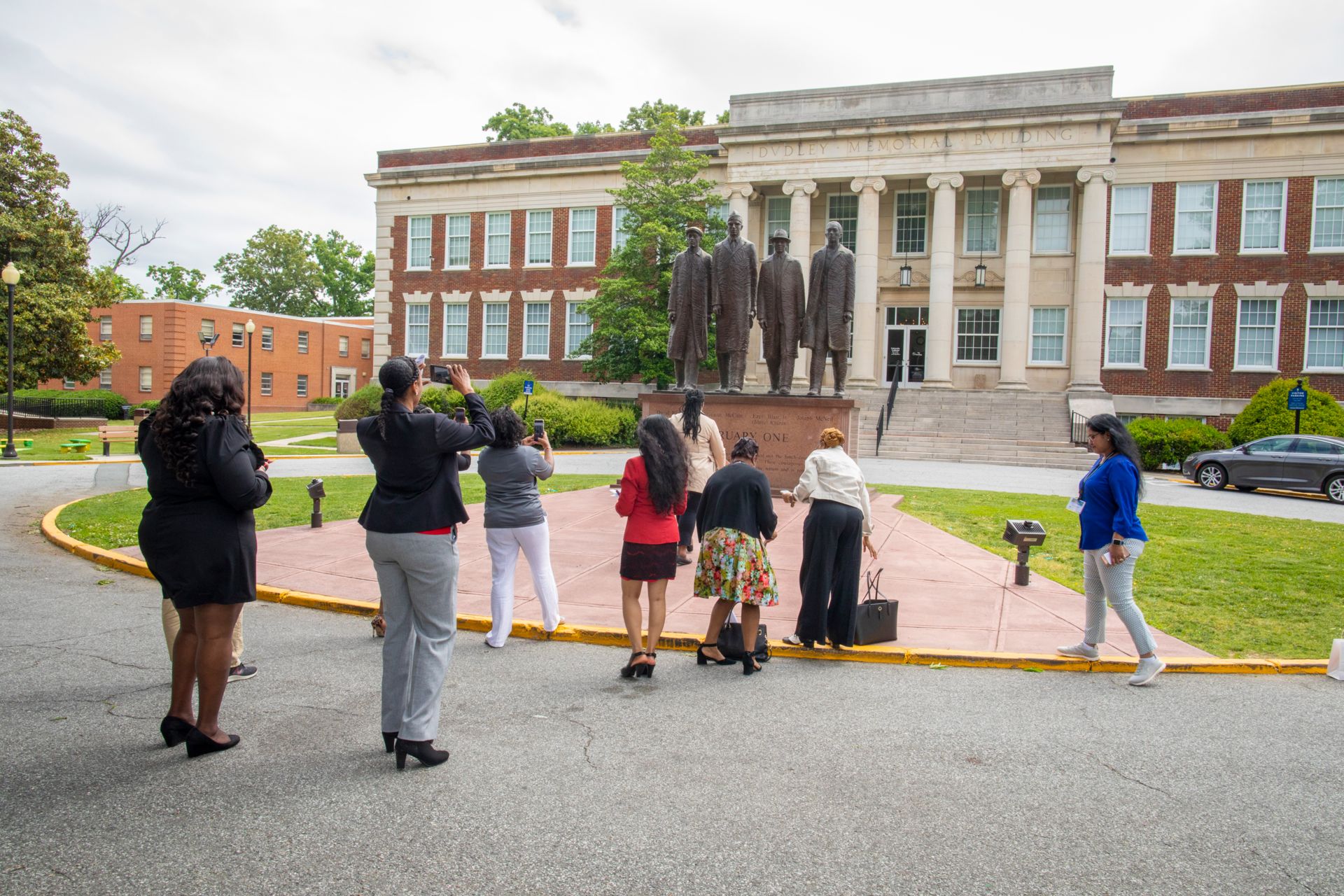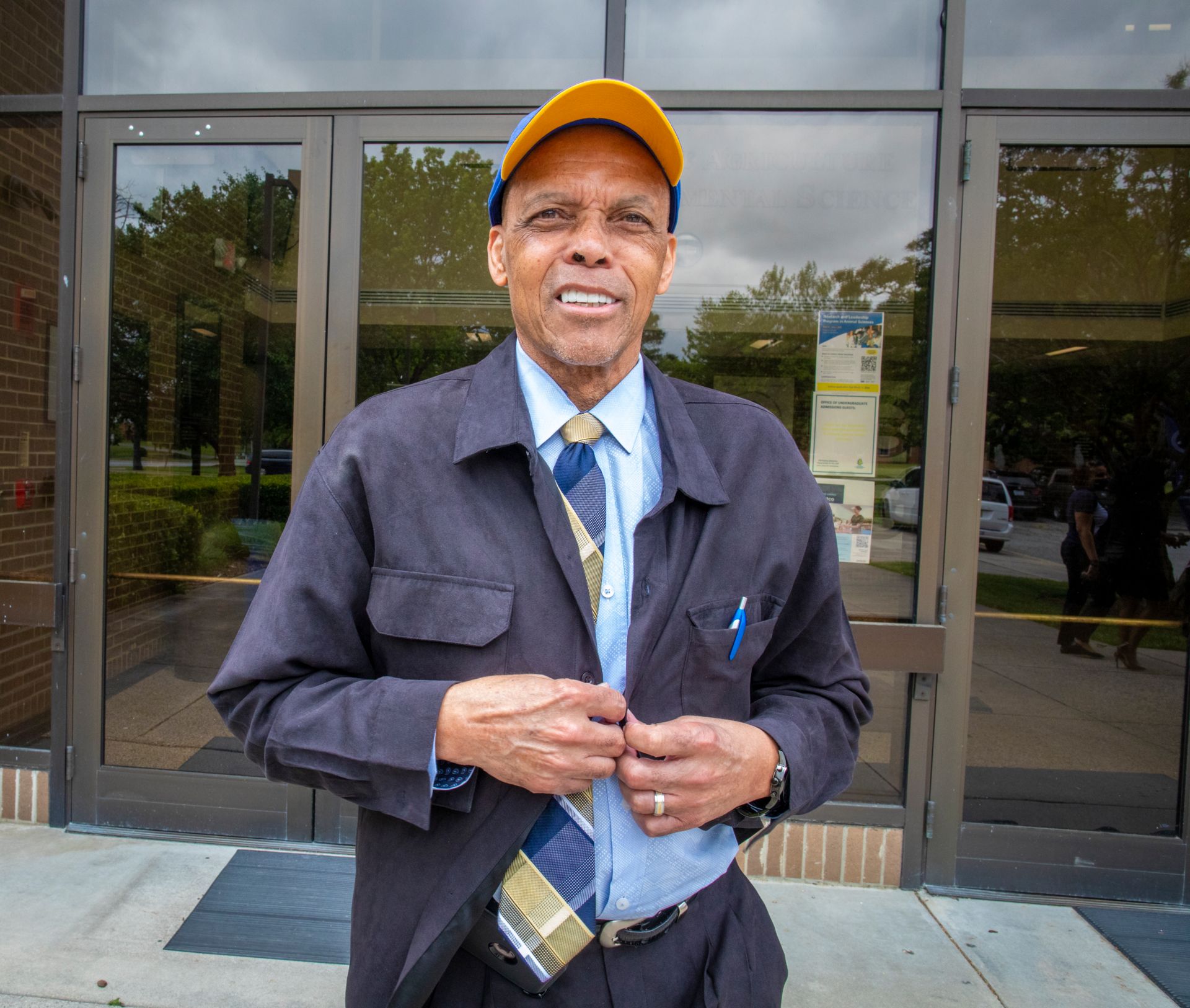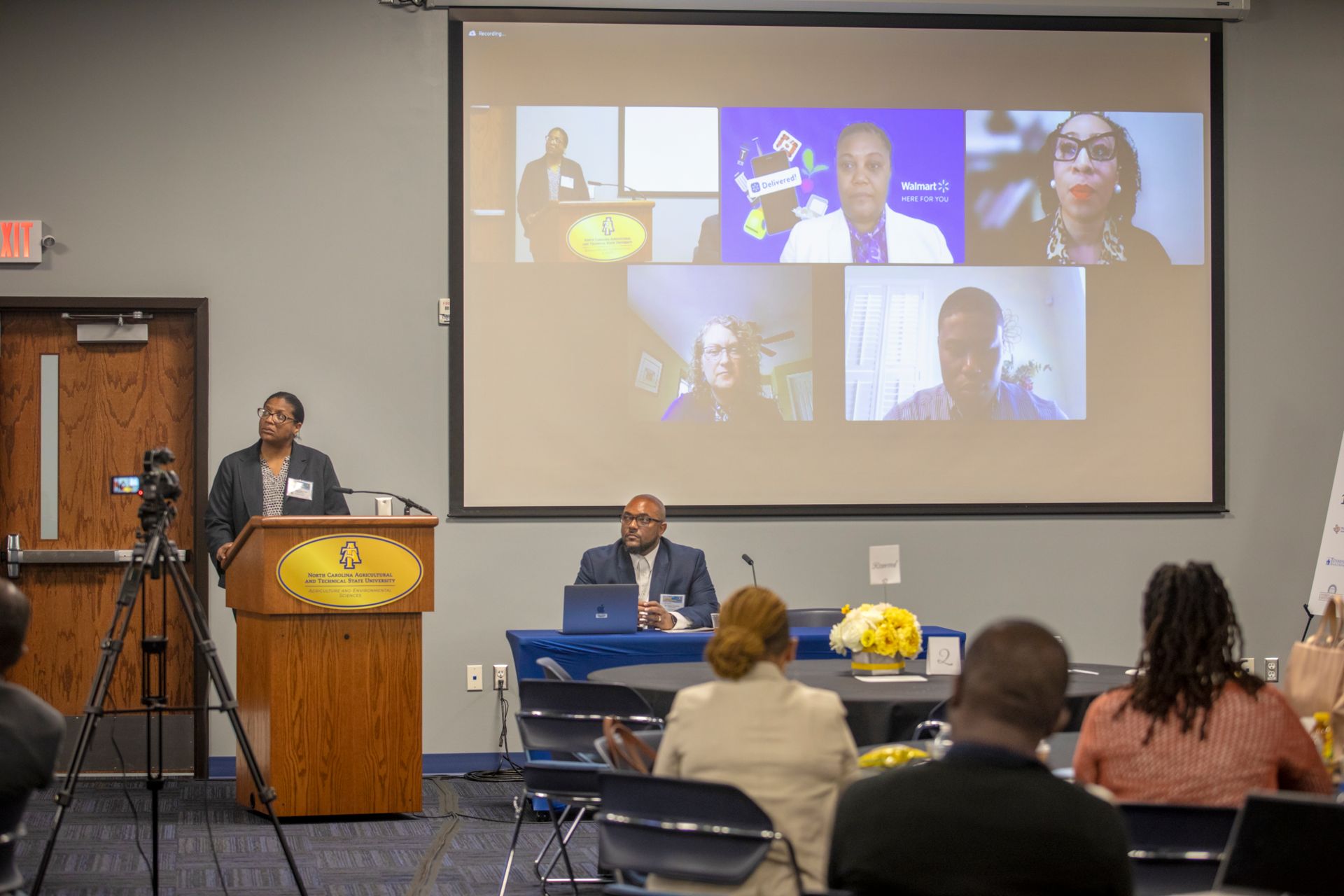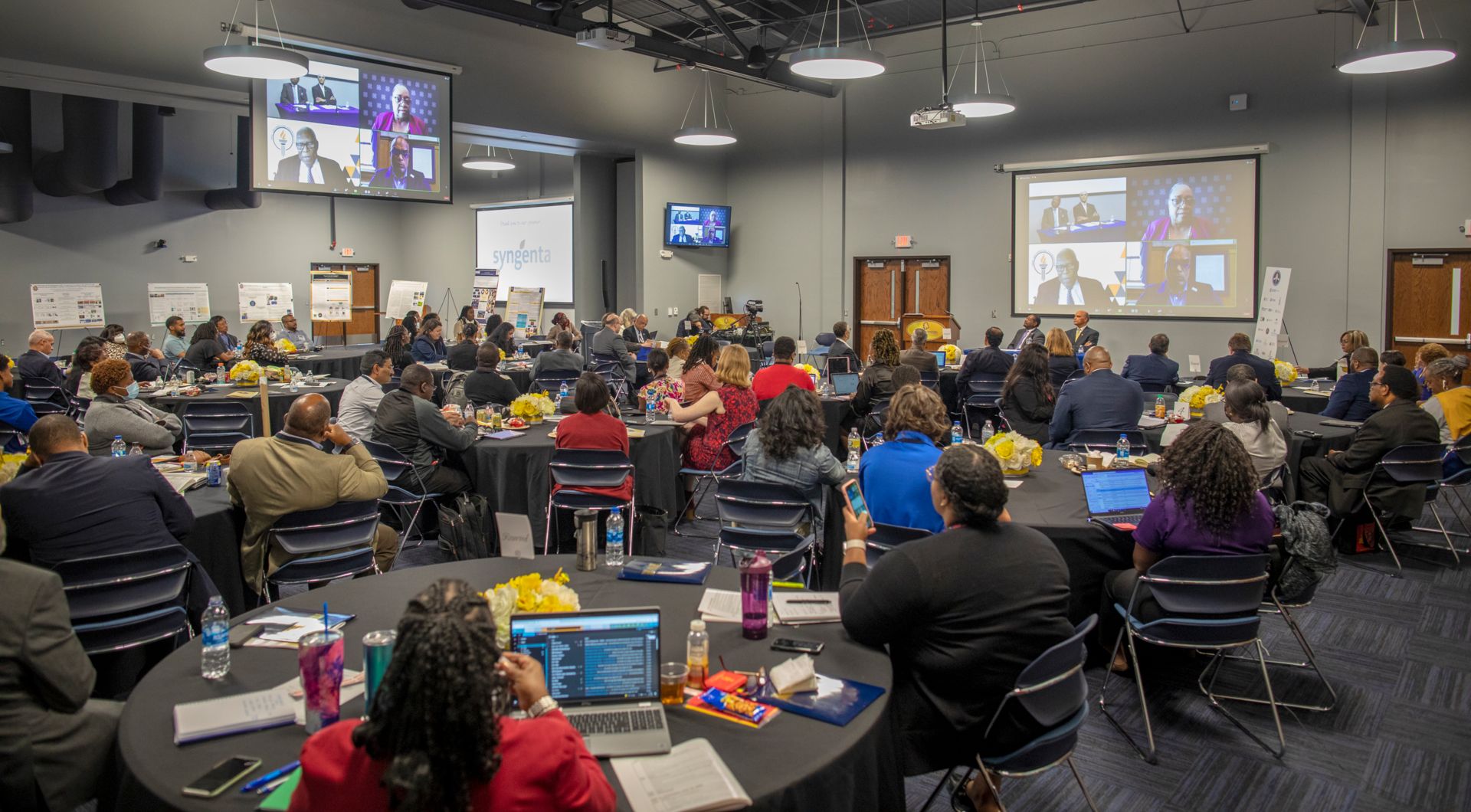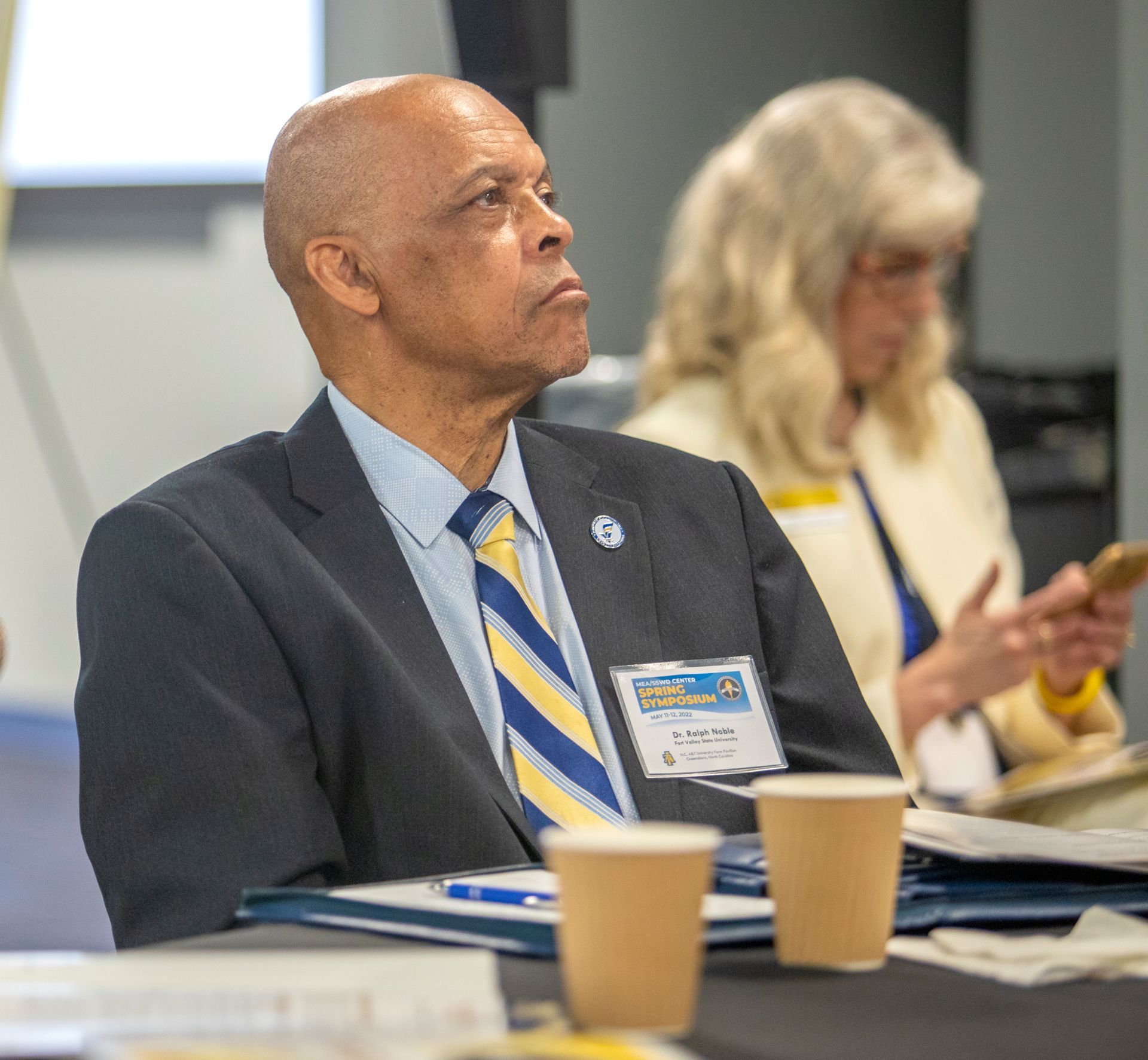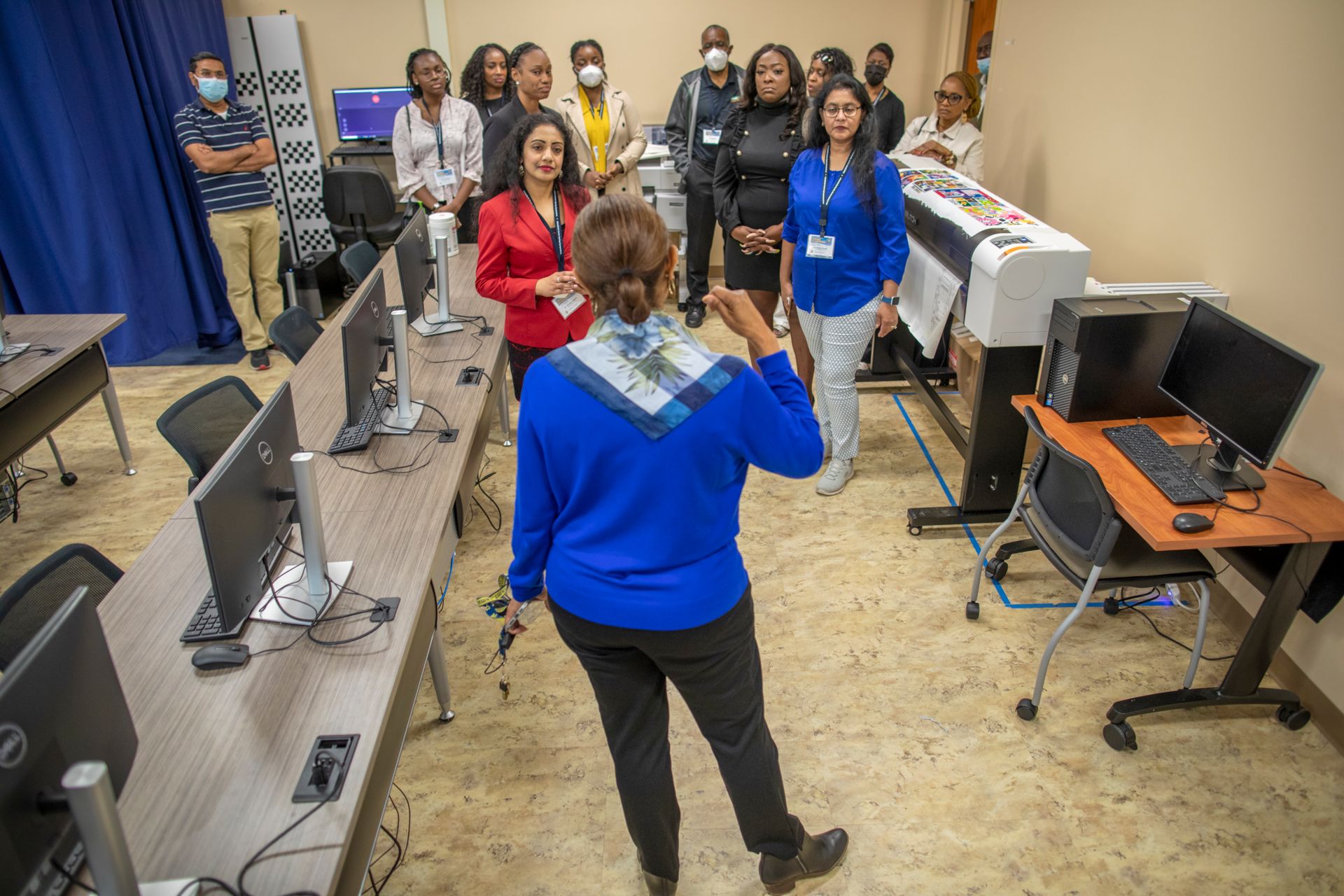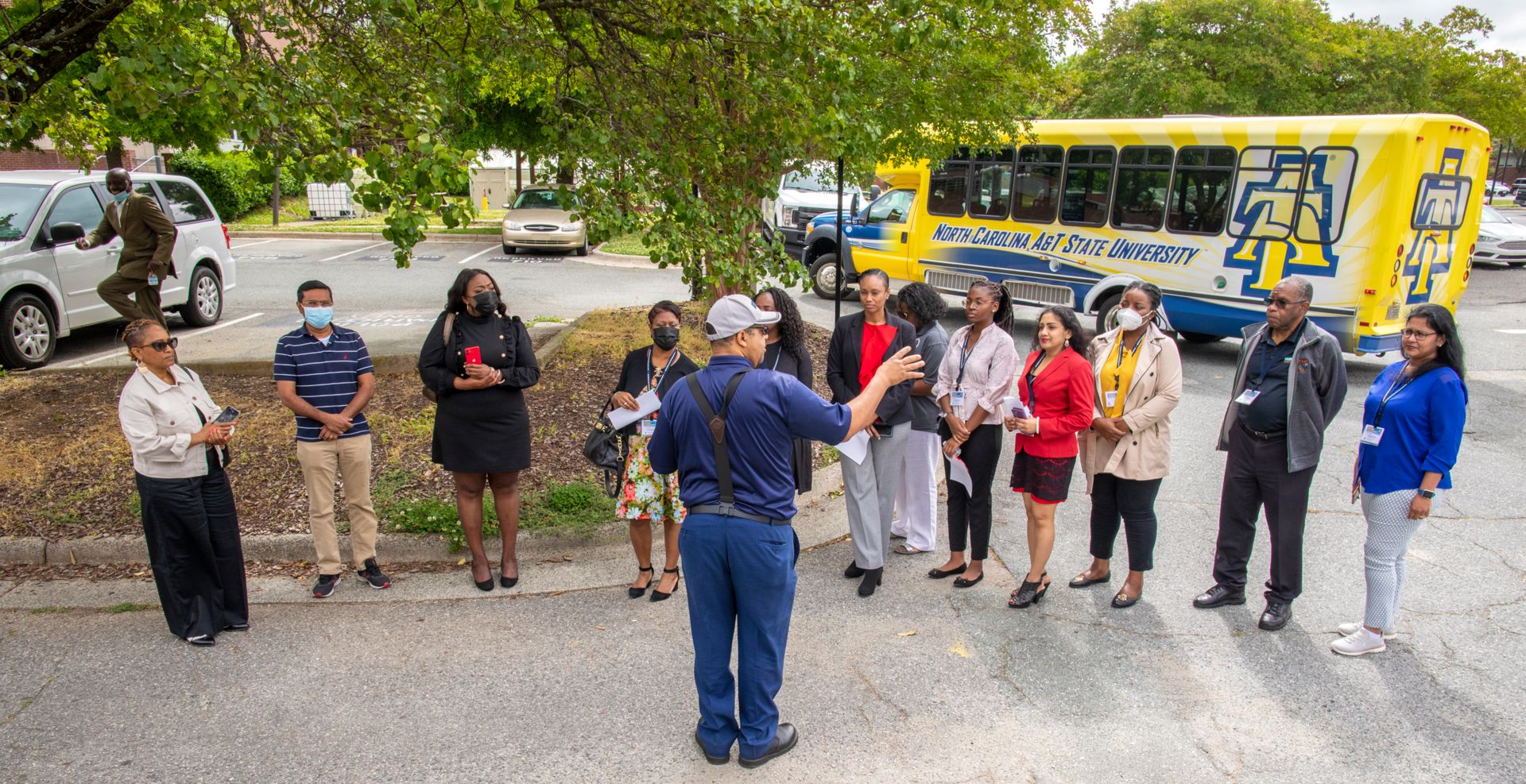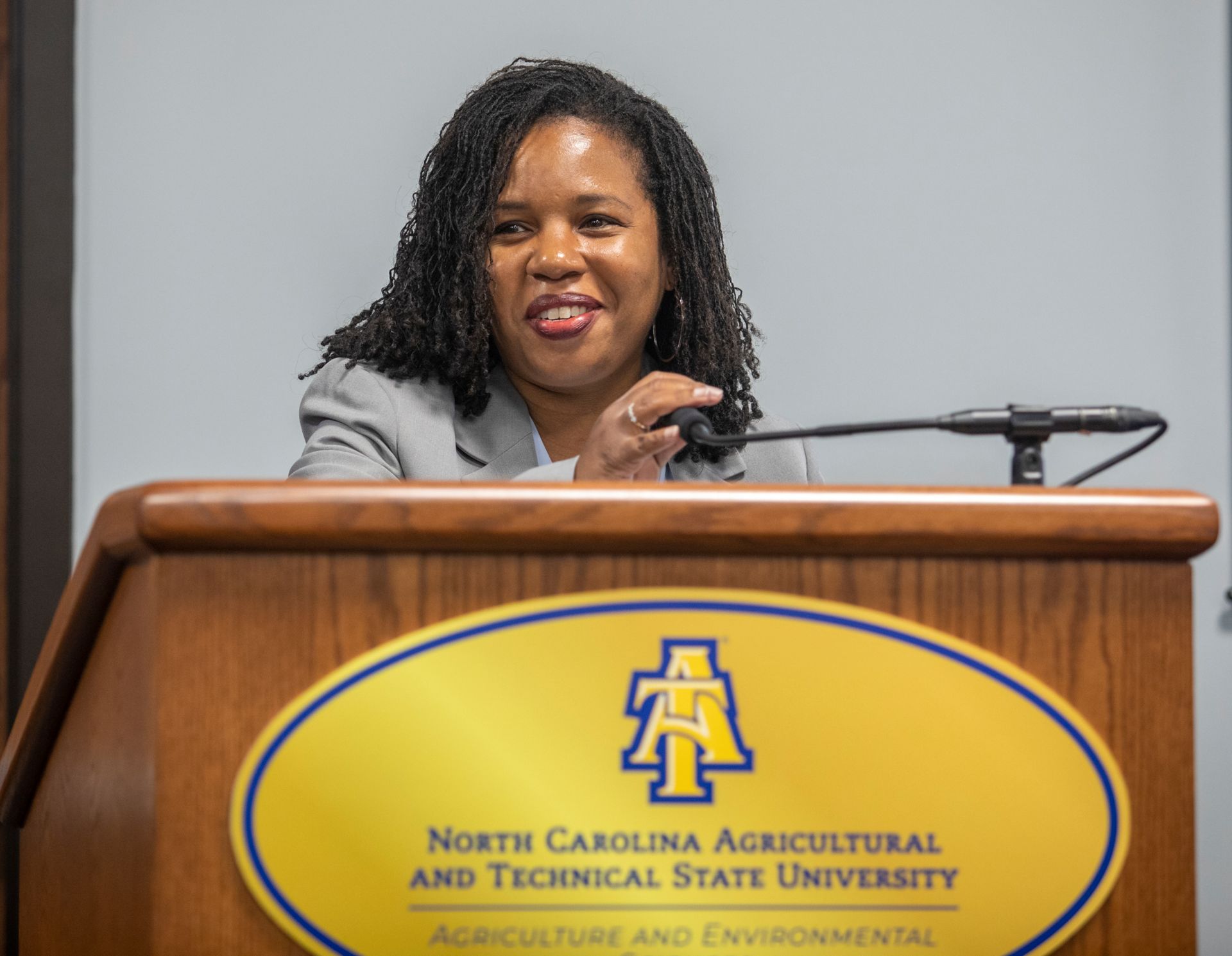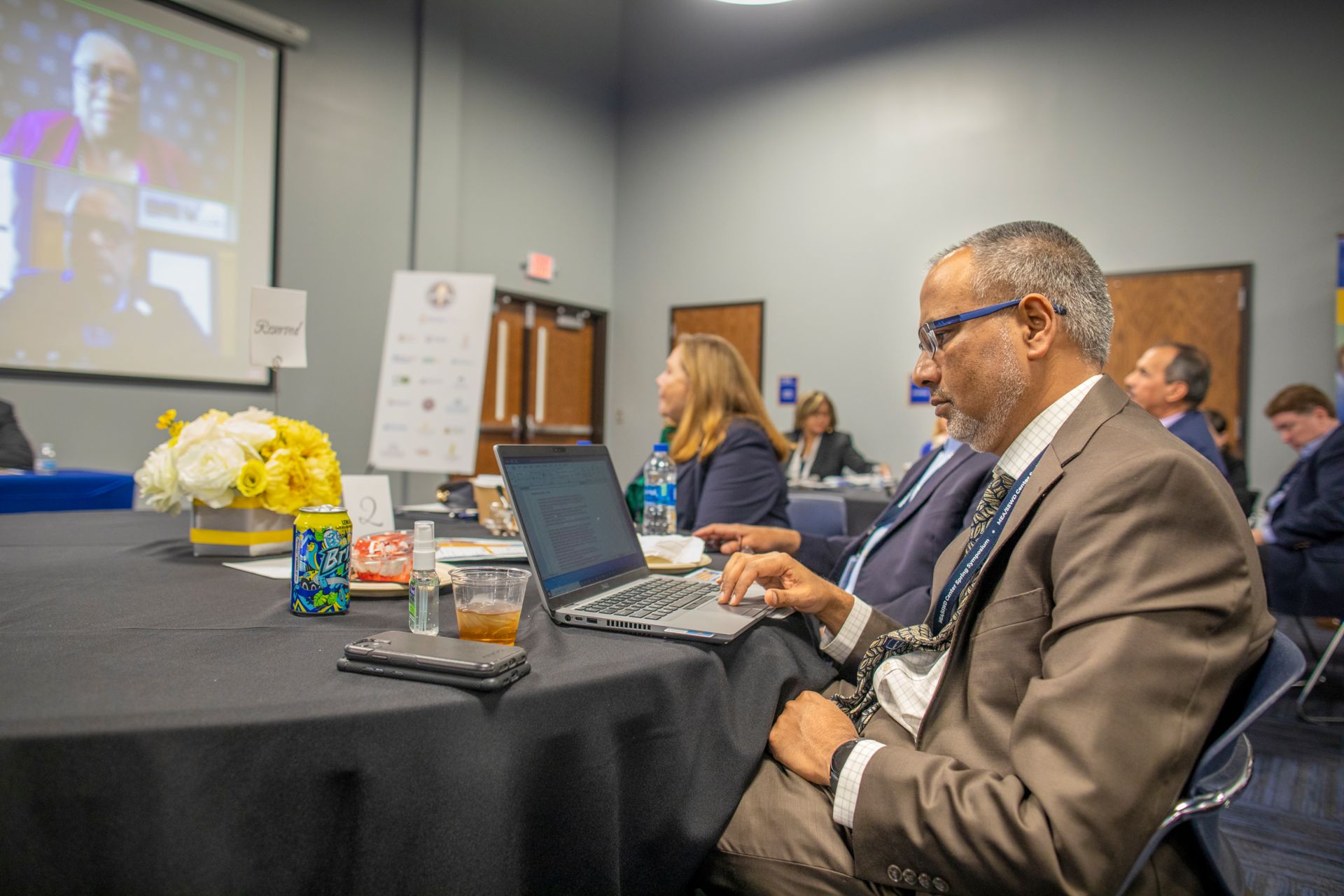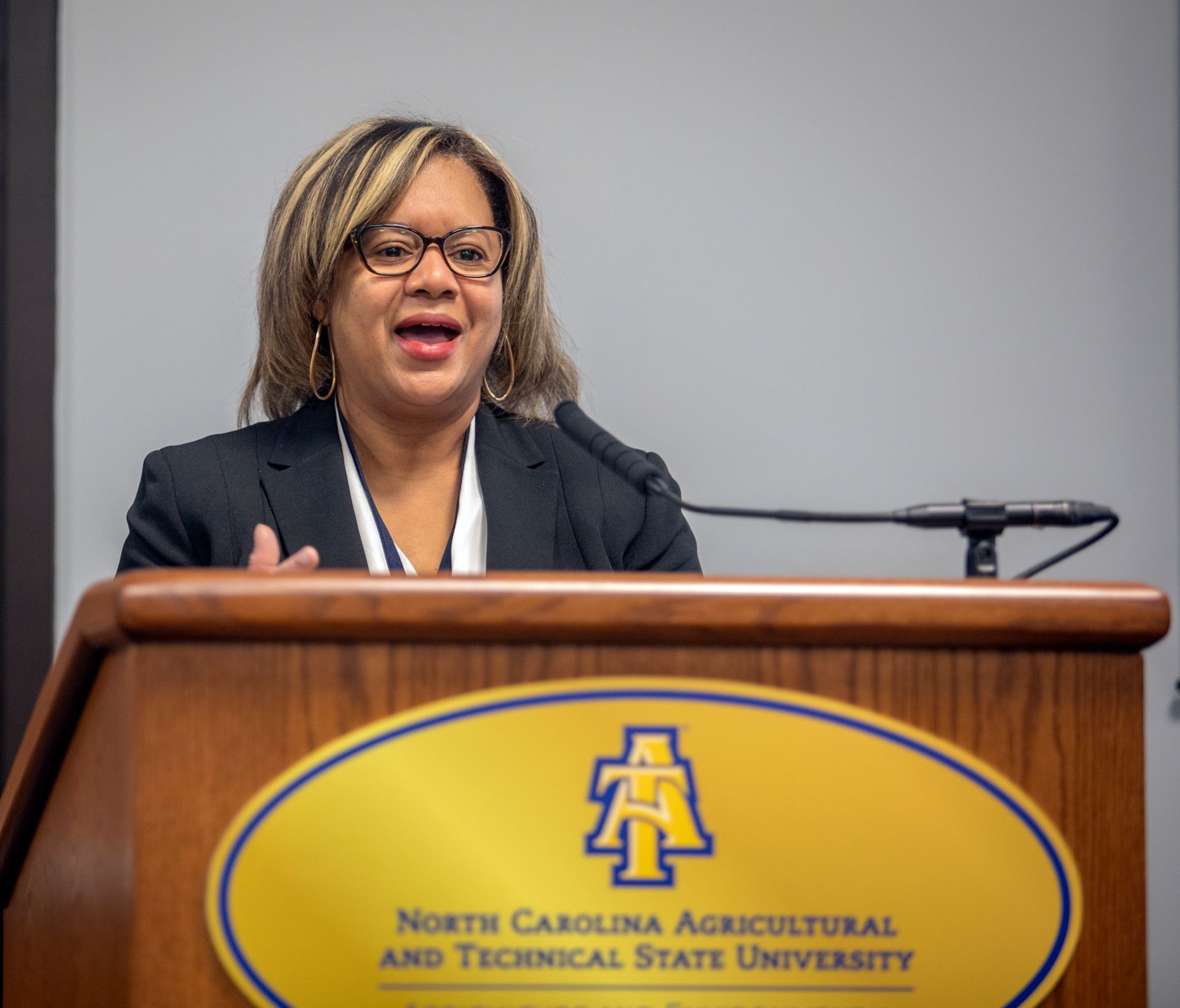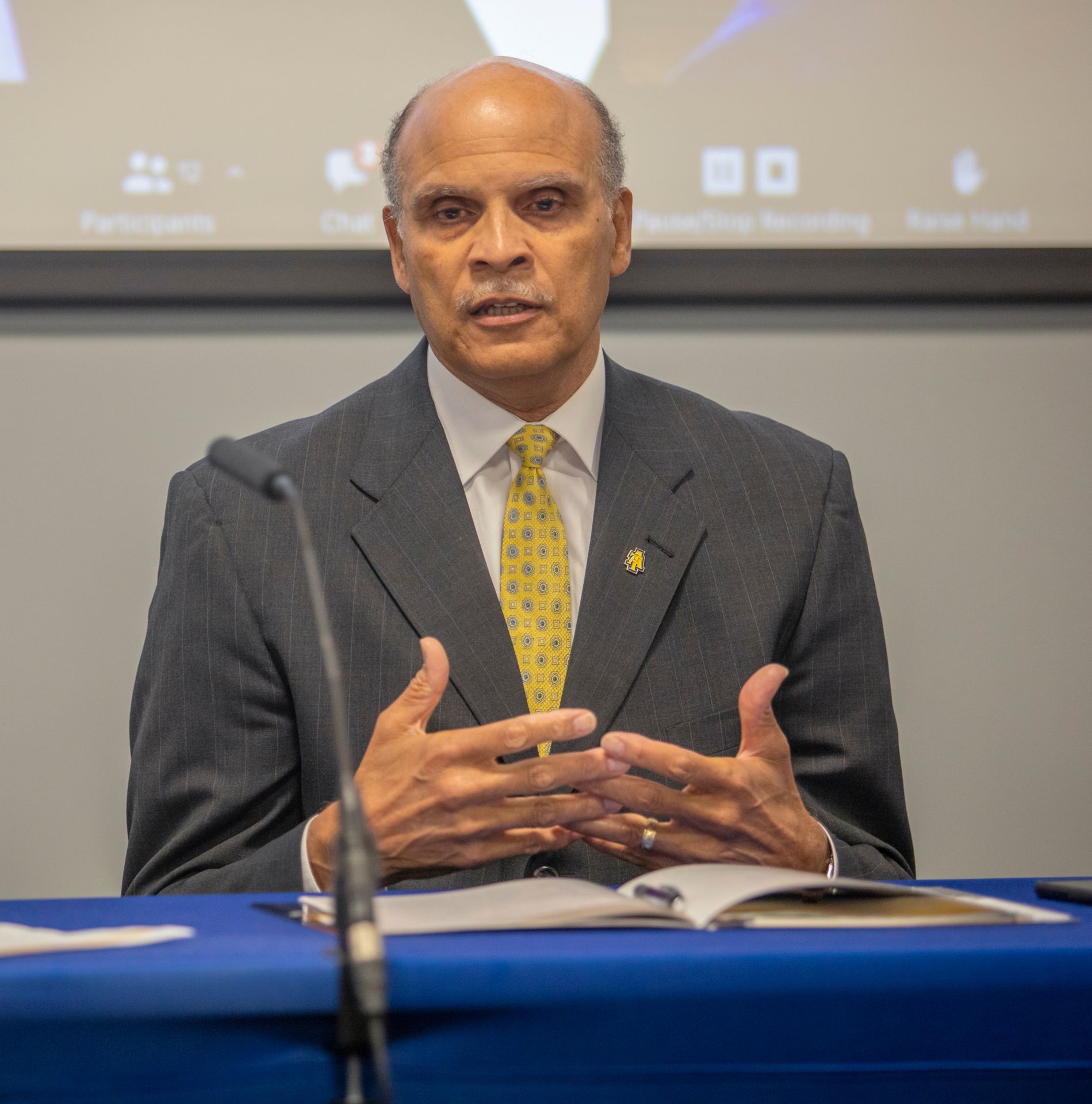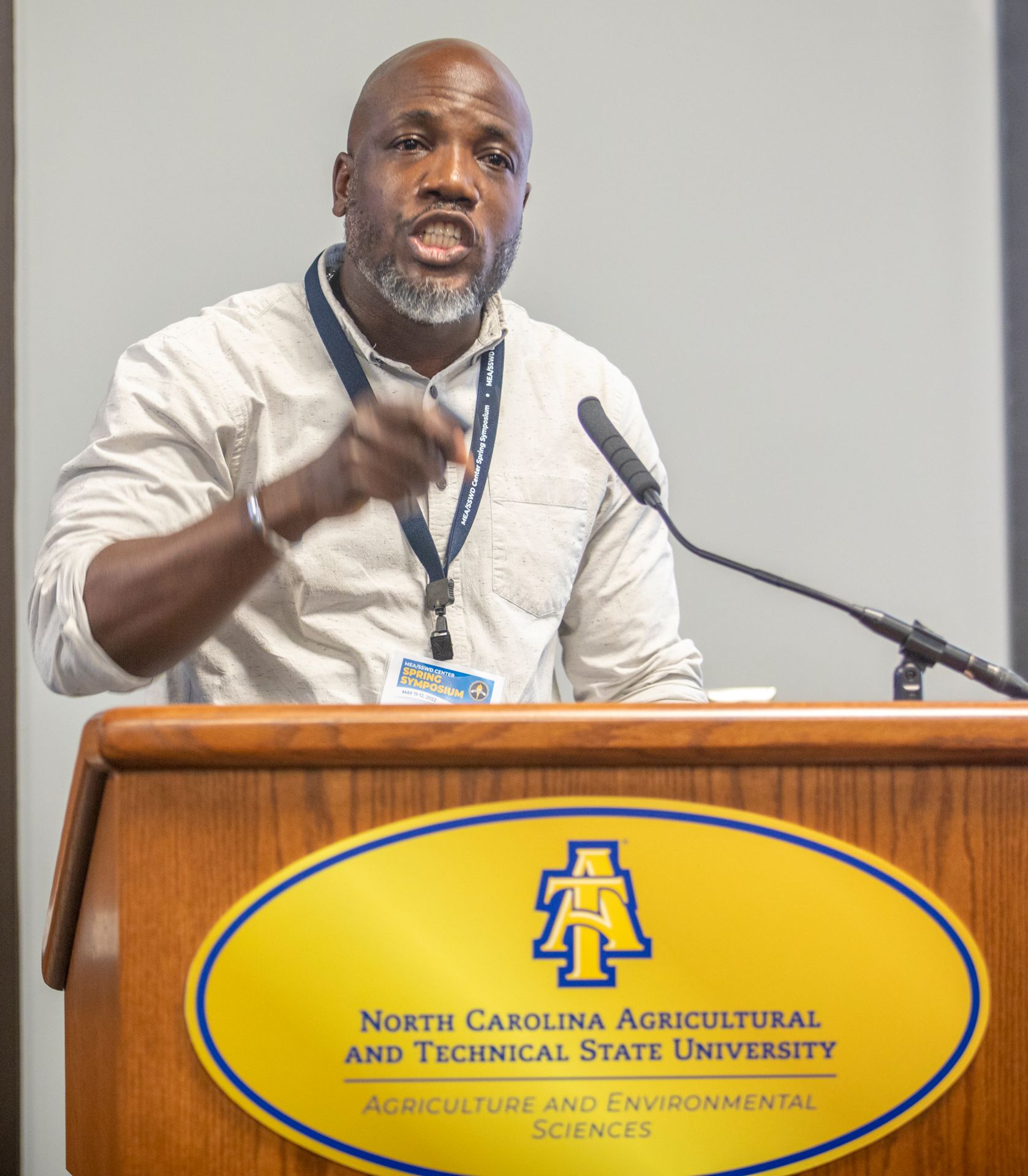2022 Symposium
Representatives from universities in the 1890s system gathered both in person and virtually at the University Farm Pavilion for the system’s first MEA Center Symposium, held this month to discuss “A Vision for the Future of Higher Education in Agriculture.”
The 1890 Center for Student Success and Workforce Development, also known as the 1890s Center of Excellence to Motivate and Educate for Achievement (MEA Center,) is a collaboration of all colleges and universities in the 1890s land grant system. Led by representatives from eight 1890s institutions, including N.C. A&T’s College of Agriculture and Environmental Sciences, the center’s mission is to improve student success and work force development among young people from underrepresented minority groups as they pursue studies in the food, agriculture, natural resources and human (FANH) sciences and the broader STEM fields.

Dean Mohamed Ahmedna introduces the panel of 1890 system university presidents, including Chancellor Harold L. Martin Sr. (seated.)
Faculty, staff and students from many of the consortium’s 19 universities came to N.C. A&T’s University Farm Pavilion for two days of workshops, campus tours and breakout sessions on topics such as why mentoring matters, employability skills and leveraging emerging technologies. The group also had the opportunity to learn from each other, discussing what’s working at their respective institutions.
“This is our chance to put to put the collective knowledge of our institutions together,” Dean Mohamed Ahmedna told attendees in opening the symposium. “We need to capitalize on what we know individually to help each other.”
Representatives from the U.S. Department of Food and Agriculture’s National Institute of Food and Agriculture came to the symposium also. The delegation toured labs and classroom buildings, spoke with researchers and viewed projects that are being funded by USDA NIFA.
“You have my full support,” Dionne Toombs, Ph.D., acting director of USDA NIFA, told attendees. “You are providing the pathway to agricultural education, and your mission is incredibly important.”

Acting Director Dionne Toombs, Ph.D., of USDA NIFA, announced a new $4 million investment in centers of excellence from USDA NIFA.
Toombs announced a major new USDA NIFA initiative at the symposium: $4 million in funding for two new 1890 Centers of Excellence.
The MEA Center itself is a USDA NIFA project, launched in 2020 with a $1.6 million grant to promote inclusion in the FANH sciences. Those funds were followed by a $1.1 million grant in 2021.
N.C. A&T Chancellor Harold L. Martin, Sr. participated in a university presidents’ panel along with Virginia State President Makola Abdullah; former University of Maryland – Eastern Shore President Juliette Bell; and Mortimer Neufville, president and chief executive officer of the 1890 Universities Foundation.
“There is a great demand in the food, agriculture and natural resources sector to develop best practices, promising strategies and innovative programs to serve all 1890 land grant institutions,” said moderator Alton Thompson, executive director of the Association of 1890s Research Directors. “Further, those practices, strategies and programs are needed for the entire land grant systems, including 1862 and 1994 institutions.”
Two tours took groups to sights around campus and the University Farm, including four of the college’s research buildings; the statue honoring the Greensboro Four, students who led the Woolworth sit-ins in February, 1964; the Student and Community Garden; and the Reid Greenhouse.
Professors Paula Faulkner and Misty Blue-Terry, the center’s co-directors, called the event a success.
“Our success in strengthening the workforce pipeline requires collaboration from across the 1890 system,” Terry said. “This and future center symposiums can help create a system-wide approach to addressing the many challenges faced by our students in preparing for and entering the workforce.”
Since its inception in 2020, the center has assisted more than 1,400 students, introduced 66 new technologies, and held 86 training workshops.
